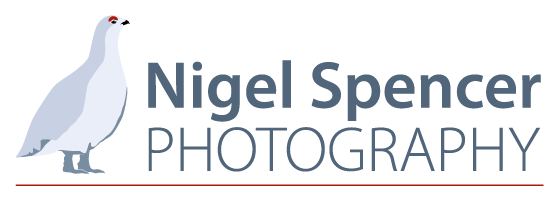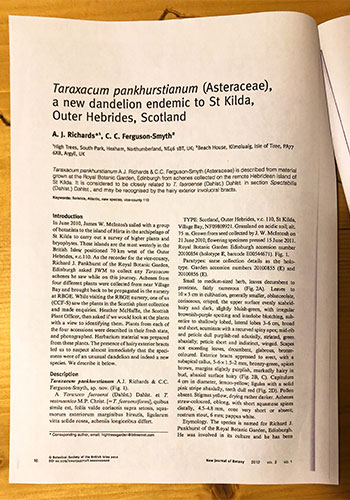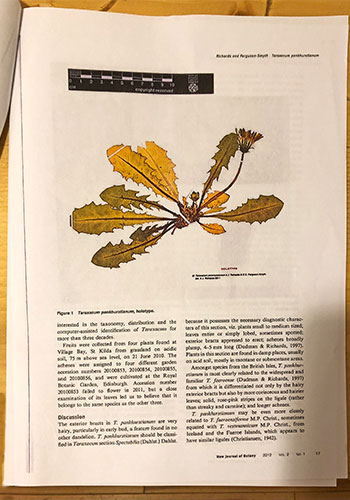| Nigel's Wildlife Photography Blog: 2019 | |||
| Monday 30th December | |||
| A Few Thoughts On 2019 | |||
| For a number of years, the final blog post of each calendar year has been a few thoughts on the year, and this is also the case with this blog that gives a few thoughts on 2019. | |||
.jpg) |
|||
| Without any doubt my highlight of 2019, was my circumnavigation around the British coast in a 46ft yacht. This is a journey that I had wanted to undertake for a large number of years and i was really pleased with this achievement in 2019. | |||
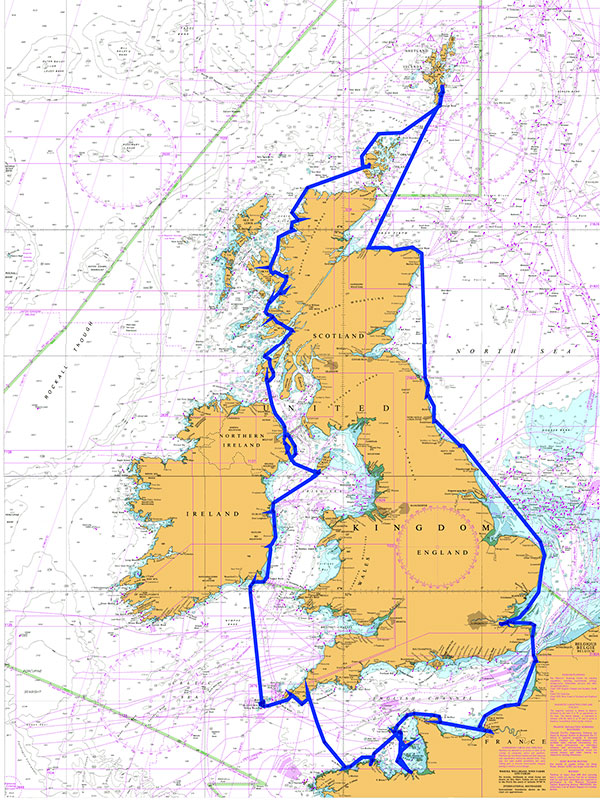 |
|||
|
The boat for this 47 day journey was a 46foot yacht named "Tonic" which was opperated by "Elite Sailing" from Chatham. Indeed the journey started and finished in Chatham which was also the starting place for additional training which I undertook (and greatly enjoyed) also in 2019. As a result, I am pleased to have completed my Royal Yachting Association (RYA) Coastal Skipper qualification and alos did the RYA Yachtmaster theory. I usually add my thoughts about the year ahead in my first blog of the year, and i intend to do this in my first blog of 2020 which I will write in a few days time. Obviously, I dont want to put everything here, that I will put in that blog, but one thing is for sure, is that I want to continue with the sailing and water activities during both 2020 and the years ahead. I am pleased that I will be returning to the Hebrides in 2020 to work as a wildlife guide, but I am also looking to do more activities on the water including some more training. I intend to finally get around to doing my RYA Powerboat Level II training (which will enable me to use a tender (launch) from a qualification point of view. |
|||
.jpg) |
|||
|
From a wildlife perspective, in 2019, I have not spent an enormous ammount of time on new species, or improving my images on species that I have already seen. This is partly as a result of a number of reasons including quite a lot of time spent on sailing and other water based activity. But also because i have some exciting new challenges in 2020, many of which involve wildlife photography. As a result od this, I have spent quite a few hours over recent months (since i have returned from the Hebrides) sorting out my hard drives and getting rid of a lot of images that will never be used. But in doing this, I have also come across over 100 images that have not previously seen the light of day. I guess it is surprising what you miss on the first initial sort, and what takes your eye at a later date. In doing this, I have freed up around 2.5TB of hard disc space which is a huge ammount. I am probably less than 50% through the sort out, so not sure that this is a good or bad thing as this has taken several weeks to achieve. This penguin below is an example of a "long lost image" that has been found in 2019. |
|||
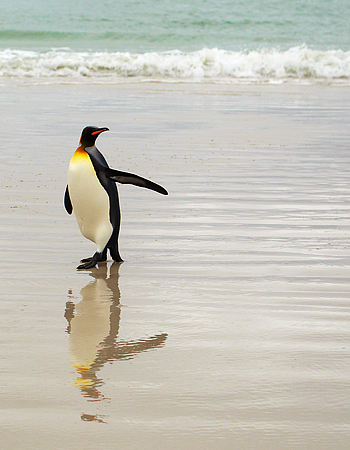 |
|||
| One species that I did manage to get quite a few new images of is Grey seals, and I have written a bit about this in another recent post on these lovely mammals a few weeks ago in this blog. | |||
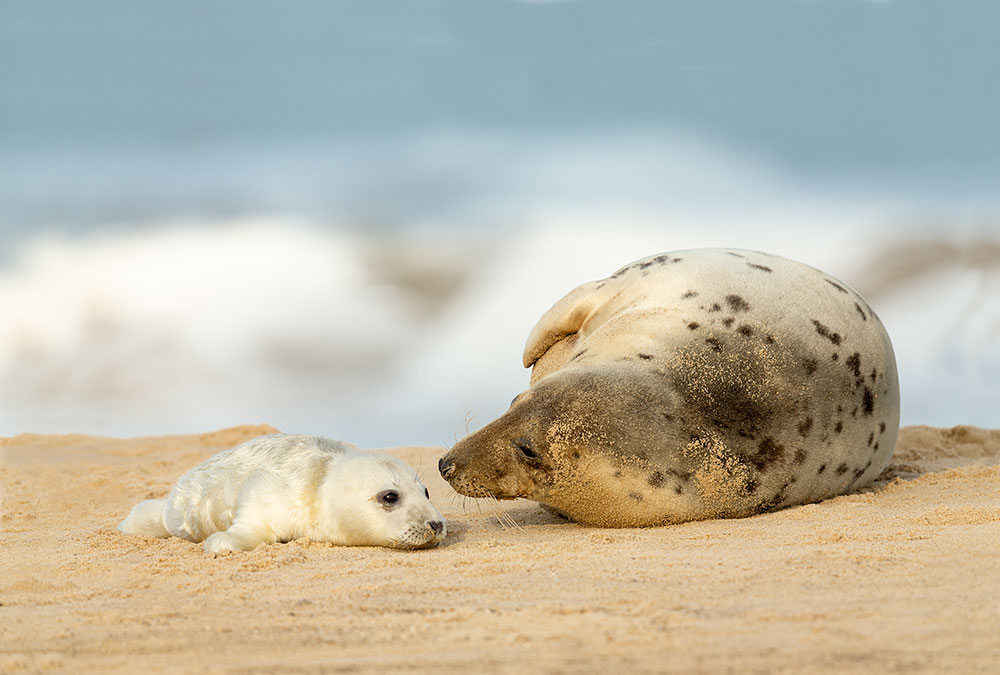 |
|||
|
During my around Btitain boat journey and my work as a guide, was pleased to have achieved quite a few visits to remote islands. It would seem that visiting Islands is becoming much more polular as an activity in its own right. Indeed I was pleased to recieve tow books for Christmas one of which was "Scottish Island Bagging" and the other "Islandeering Of Britain's Hidden Islands" and wllough I have not read either of them much yet, they both seem an excellent addition to my bookshelves. One island that I have previously visited was St Kilda which is about 100 miles west of the British mainland. But I had not managed to spend much time ashore other than time in Village Bay. In 2019, I was pleased to visit St Kilda twice, and on one of these occasions, I visited Conacair which is the highest point in the St Kilda island chain and a great walk in its own right, so that was another place that I had wanted to visit for a long time achieved. Also pleased that a St. Kilda trip is one of the trips that I will be doing in 2020 during my ongoing work as a wildlife guide. |
|||
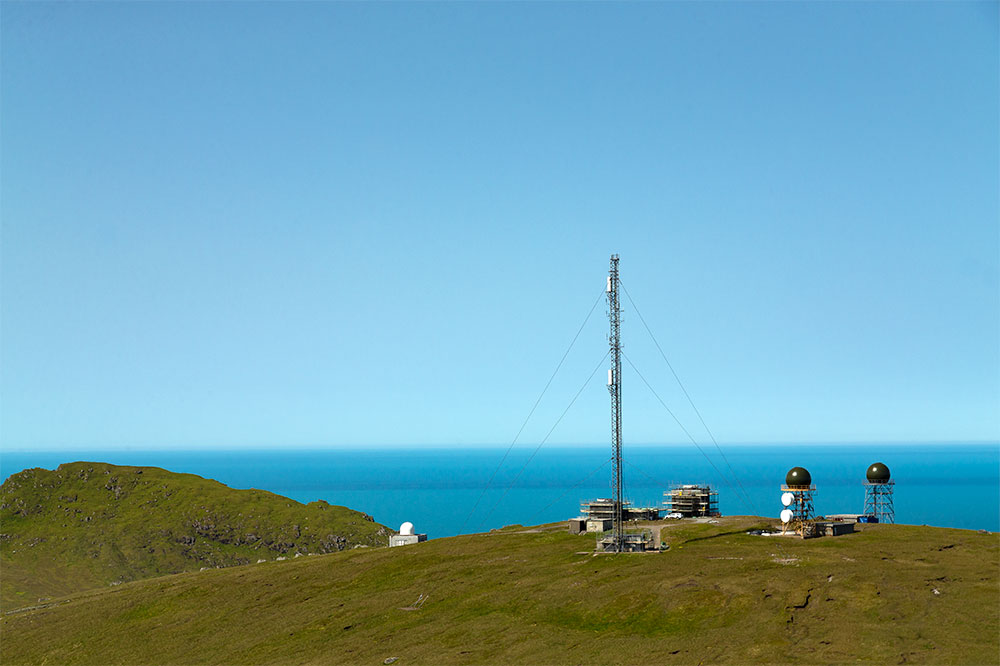 |
|||
|
I also manged to add about 20 munros to my total which is rising very slowly. But at over 220 completed the end is still not in sight, but it is getting nearer. But in 2019, I did some excellend hillwalking and the quality of the walks was really good and enjoyable. Peasks such as Slioch and the Ben Allign ridge were really good and will long be remembered after i have compled my last munro. But some of the munros that have a reputation as being a bit "ordinary" or a "slog" were also completed and enjoyed. Our ascent of Ben Wwyvis was a short but good day. In Perthshire, the three Munros of Beinn a' Ghlo were excellent especially as we walked out onto the summit above the clouds on a loverly warm autum day with great views in all directions. Again the ascent of more Munros is another of my target activities for 2020. |
|||
|
|
|||
| Friday 20th December | |||
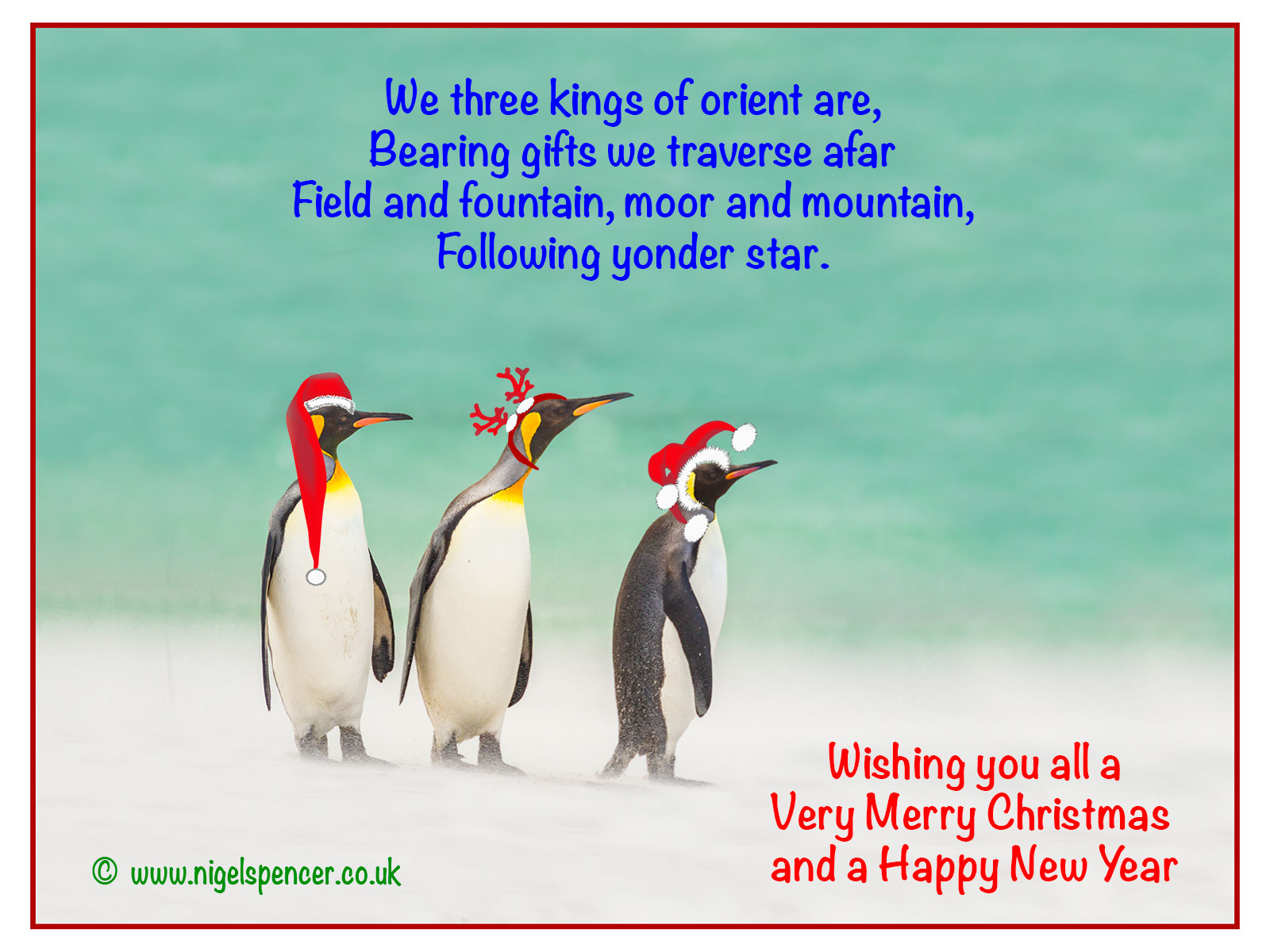 |
|||
|
|||
|
|
|||
| Saturday 14th December | |||
| Wild World 2020 | |||
| As regular followers of my photography will know, I produce a wildlife calandar each year, and 2020 is no exception. Next years calendar is entitled "Wild World 2020" and is a collection of different images and subjects. | |||
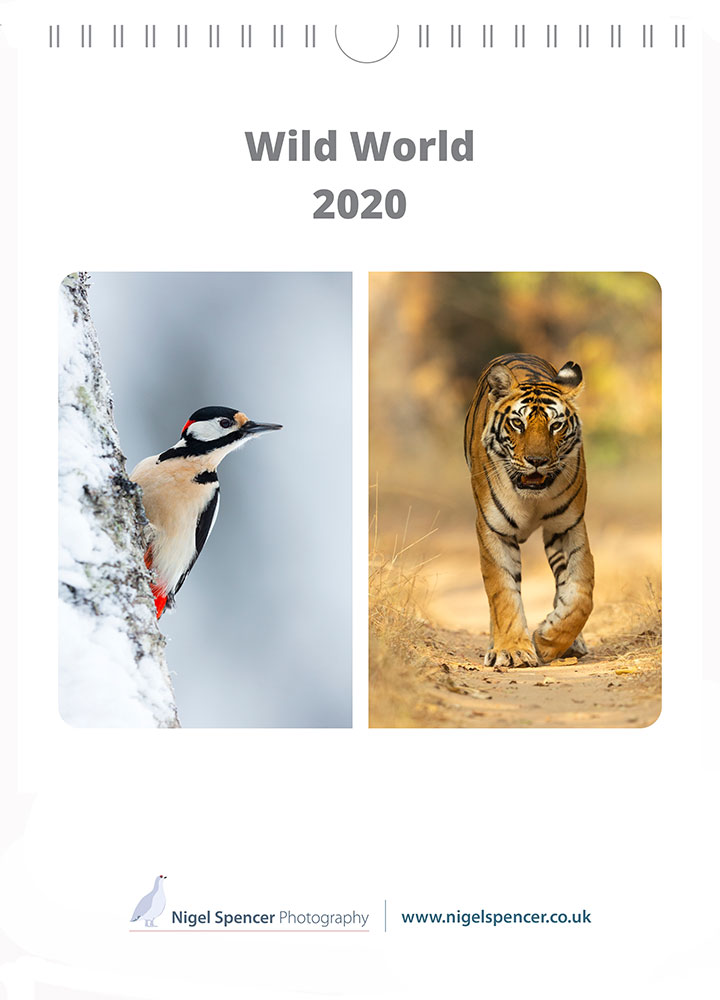 |
|||
| This is my tenth year of producing a calendar and I have made a descission to put a slightly different feal for this 2020 edition. It has two images on the cover rather than just one. But inside it has a wide variety of both new and old images. In years gone by, I have usually focussed my calendar on a particular theme including: Penguins, polar Bears, Mammals, etc. But in 2020, I have chosen a range of flowers, fungi, and butterflies as well as several birds and mammals, in my efforts to make this a wider subject range. | |||
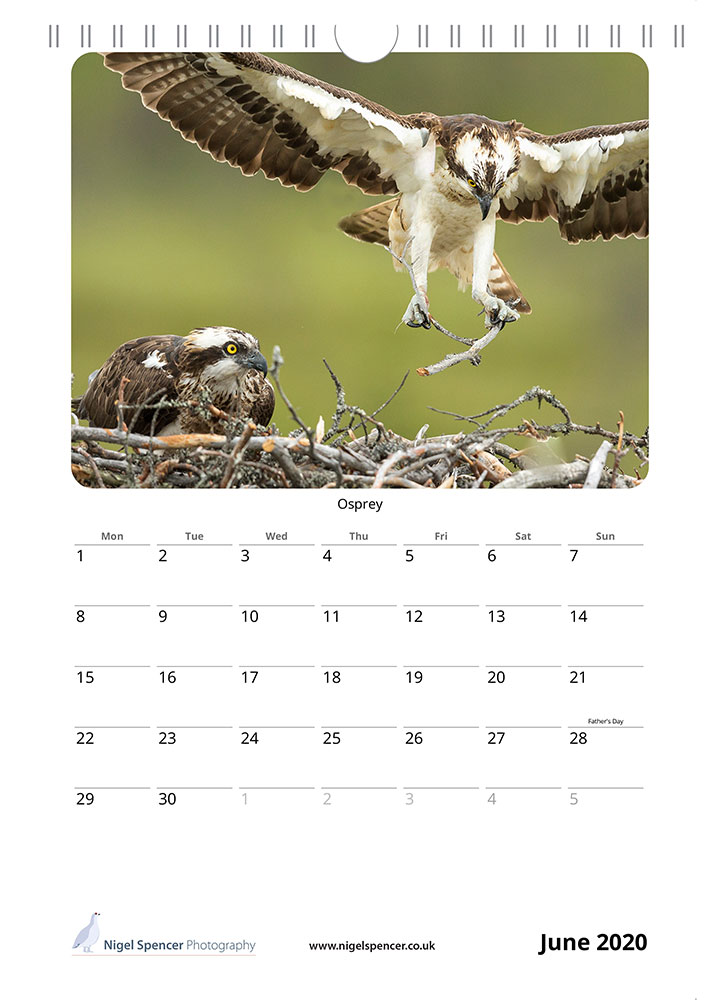 |
|||
| Two of the months are shown here, June has a close up of an Osprey bringing a twig into the nest, whilst December shows a group of King Penguins on the beach at Volunteer Point in the Falkland Islands which is one of my personal favourite penguin images | |||
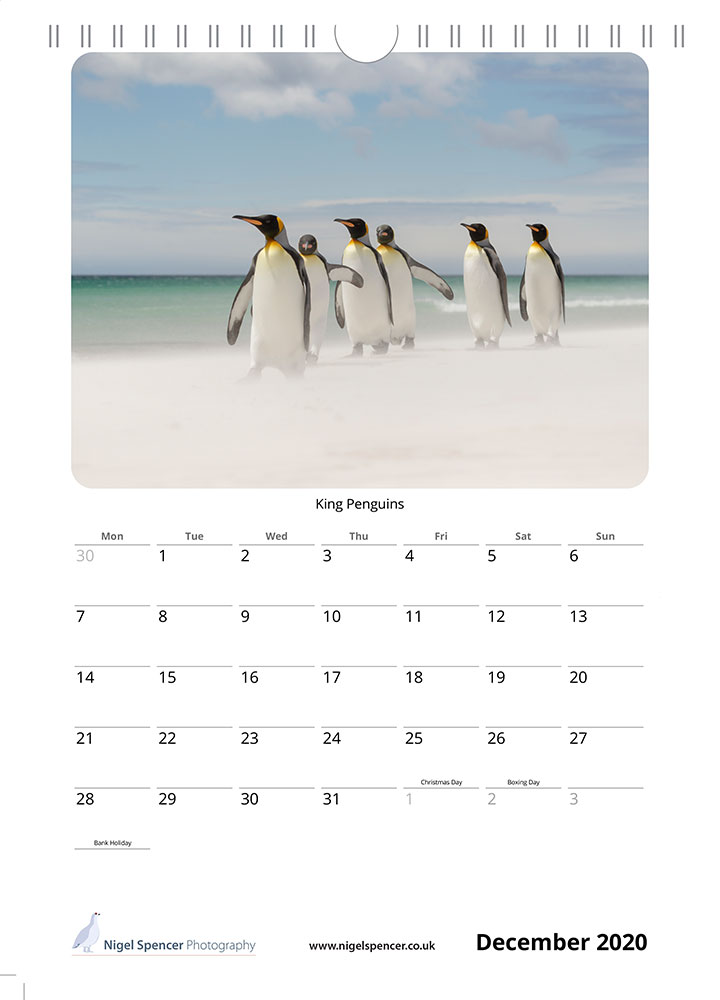 |
|||
| As in previous years, the vast majority of the pring run has been sent out as presents and gifts, and hopefully almost 100 calendars are now safely in good homes. There are now only a very small handfull left and if anyone would like one, please contact me. If you don't already have my contact details, there is a "Contact Nigel" page on this website which is found on the menu on the left hand side. | |||
|
|
|||
| Friday 22nd November | |||
| Grey Seals A British Conservation Sucsess | |||
|
There are many, many species which I have seen and photographed before, but want to revisit again to both enjoy from a wildlife watching perspective and to photograph again. One of these species is Greay Seals, so earlier this month, I visited one of our Grey Seal coloniest along our coast and spent two enjoyable days. It is good to report that Grey Seals are one of the great sucsess stories regarding British Wildlife. It is estimated that when the numbers were at there lowest, during the later part of the twentieth century there were under 1000 Grey Seals visiting our shores each winter to give birth. But numbers have risen over recent years and there are now well over 100,000 seals giving birth along our shores each November and December. Indeed there was over 1000 at the site where the images below were photographed. It is however still very important to give these lovely animals plenty of room to go about their buisness and to avoid any form of disturbance. Therefore everyone should keep a mimimum of 20 meteres away from any seals at all times. Indeed all of these images were taken with a 600mm lens (often with a teleconvertr attached) to ensure i was a good distance away from them. When seals are born, they are a yellow colour, but turn white reasonably quickly. They rely on their mother for milk and increase weight by about 2kg per day. At this stage they are not waterproof and mum needs to keep them out of the sea for about a week. The baby featured in the images below was newborn on the day of my visit and was about 6 hours old. Certainly a very cute addition to the day. |
|||
 |
|||
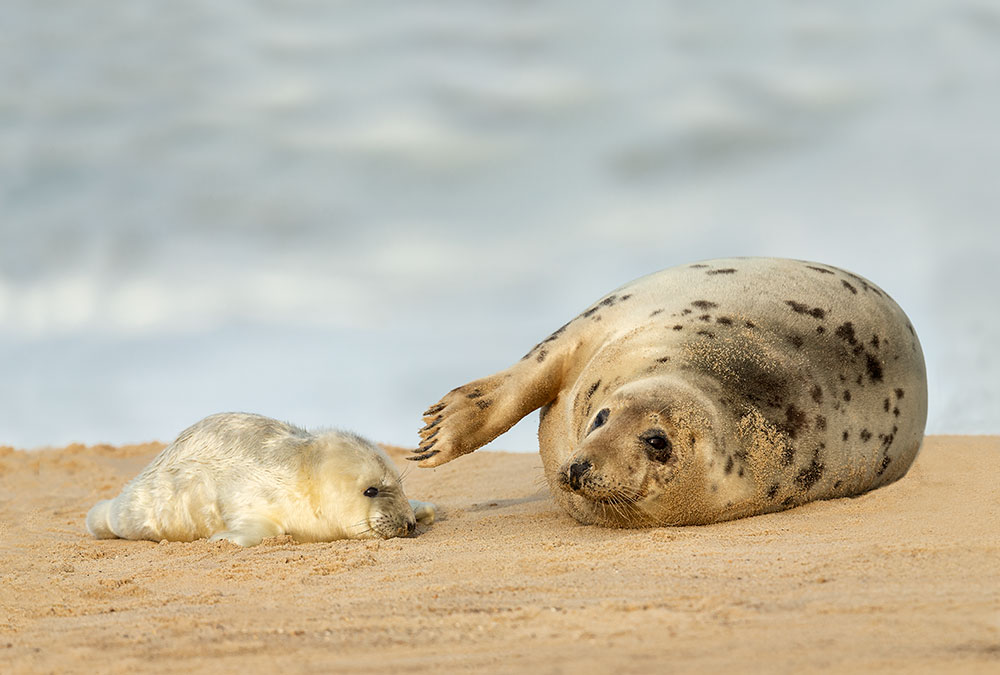 |
|||
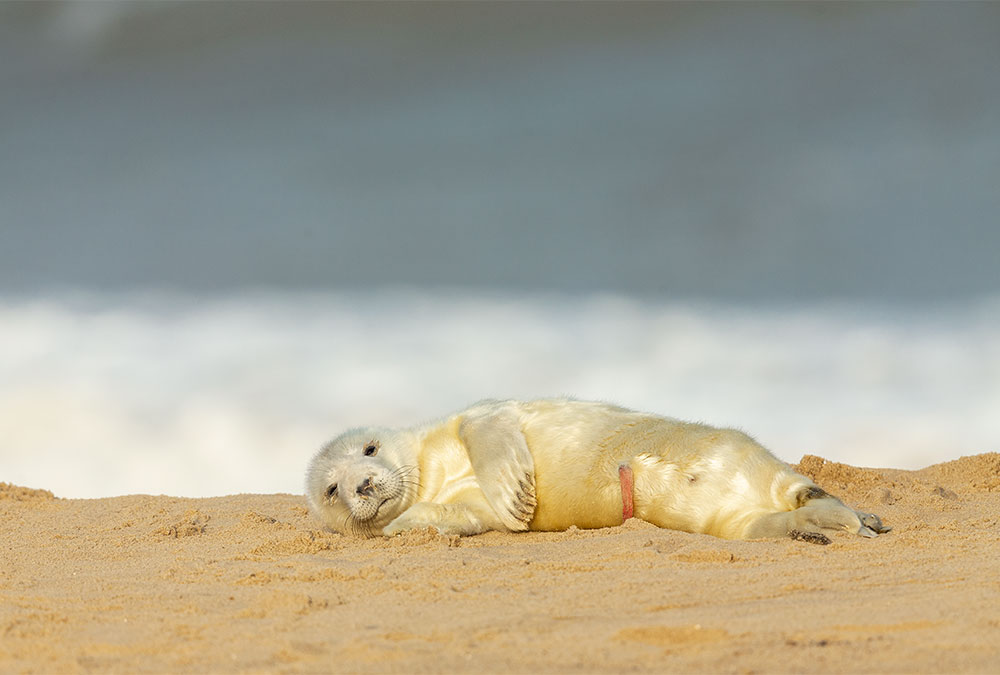 |
|||
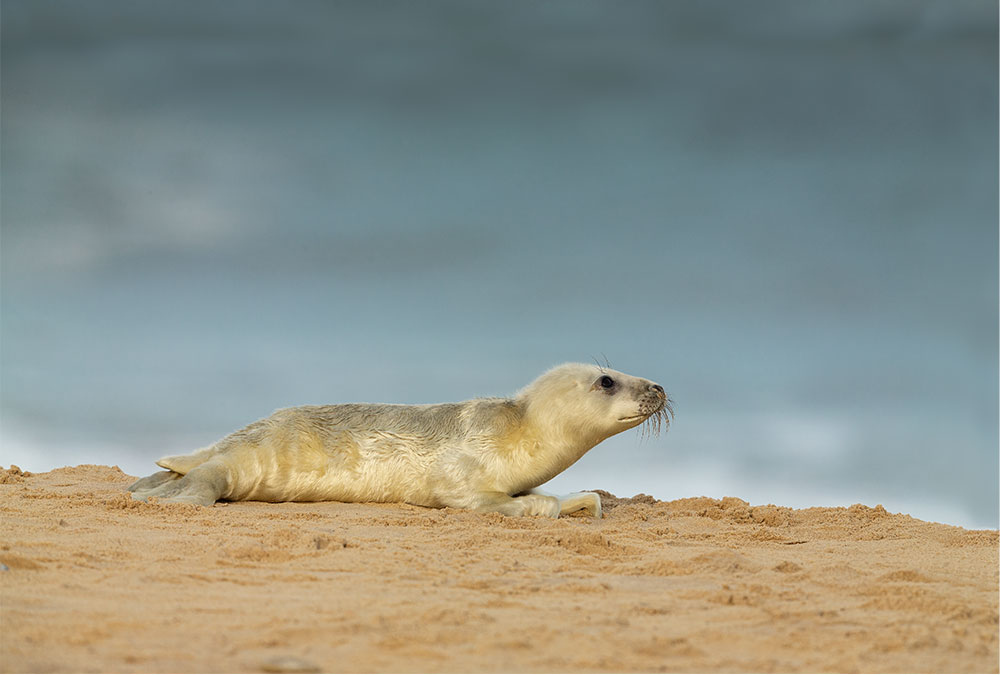 |
|||
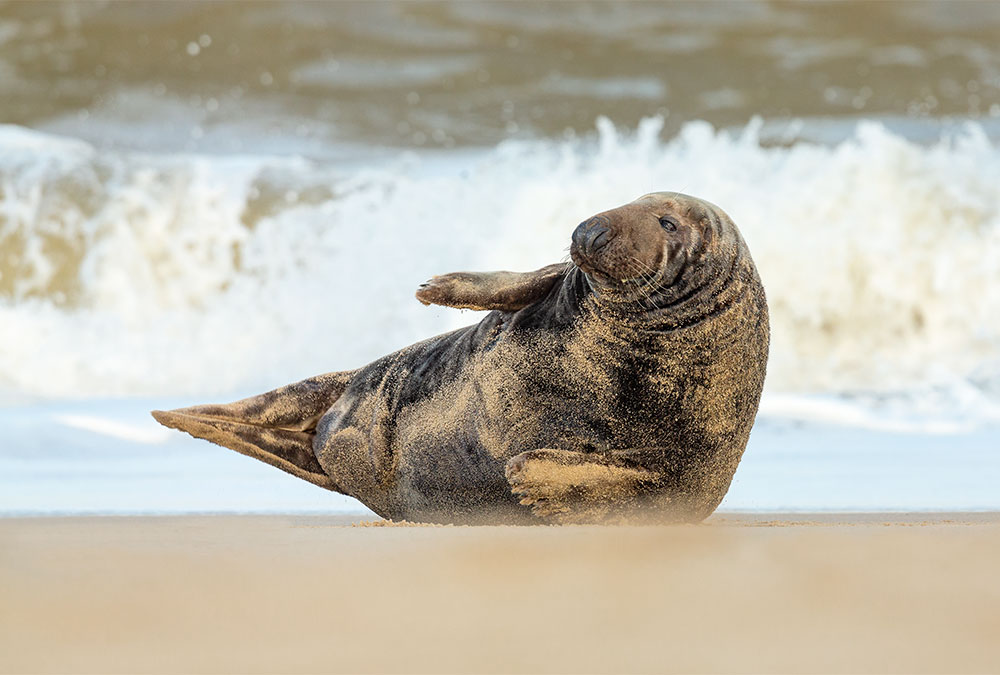 |
|||
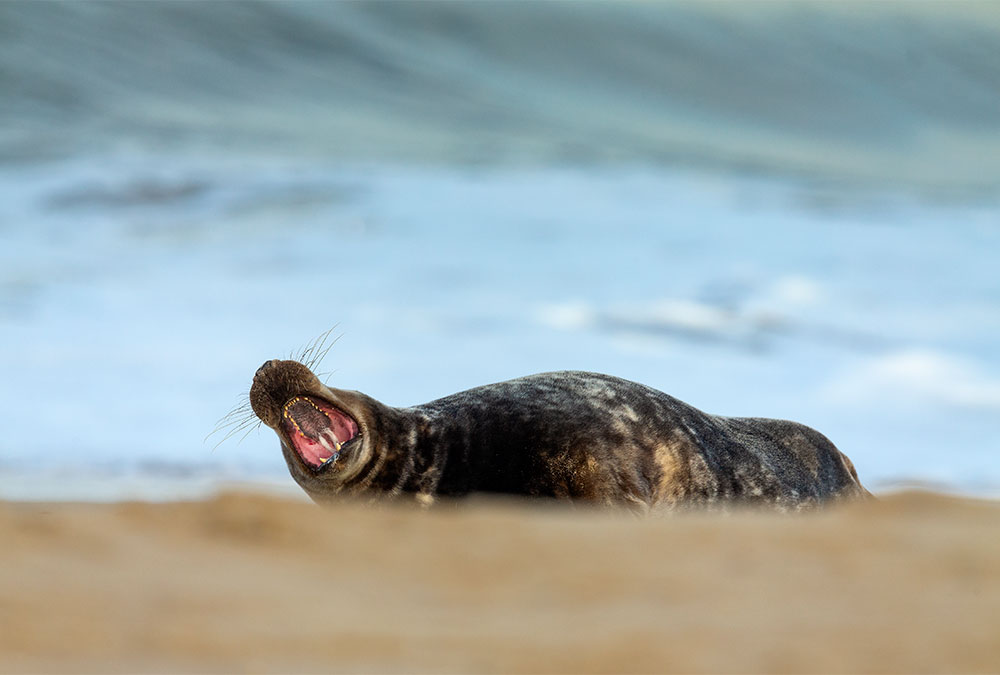 |
|||
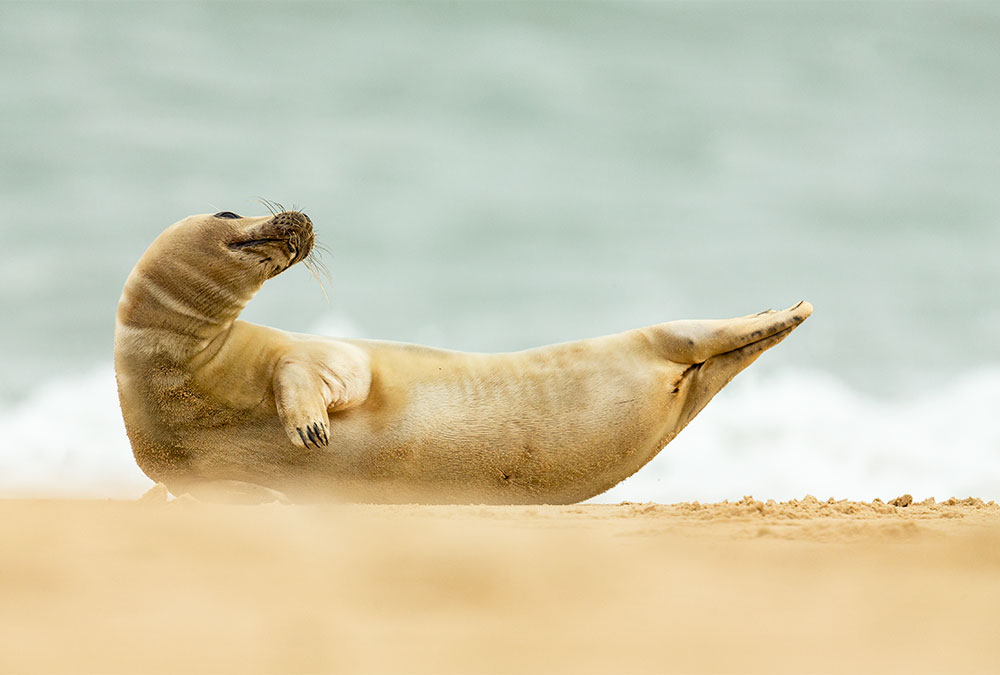 |
|||
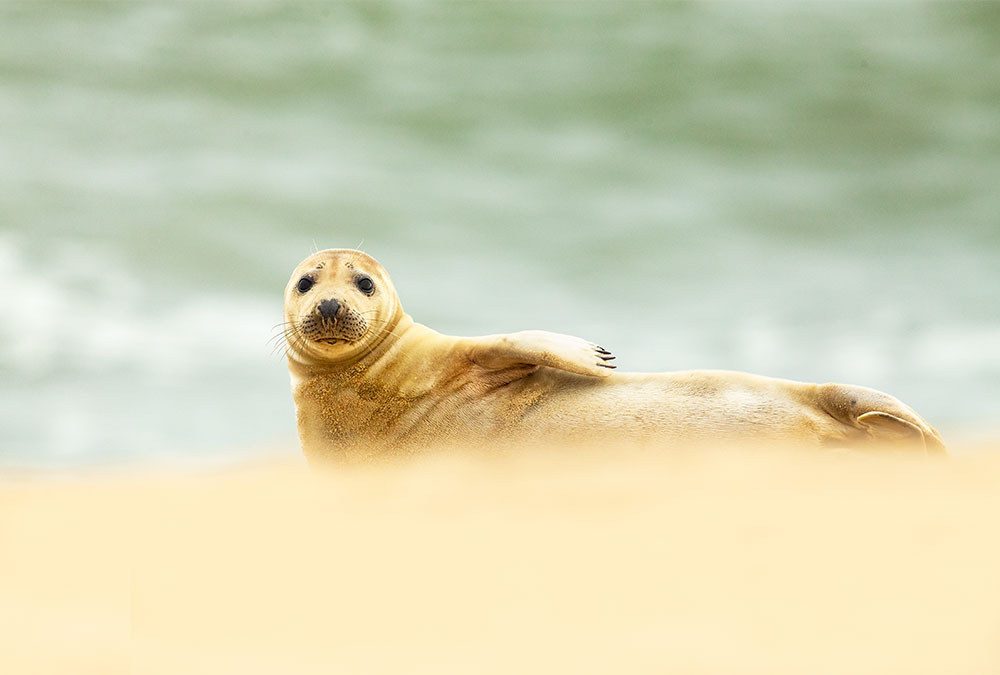 |
|||
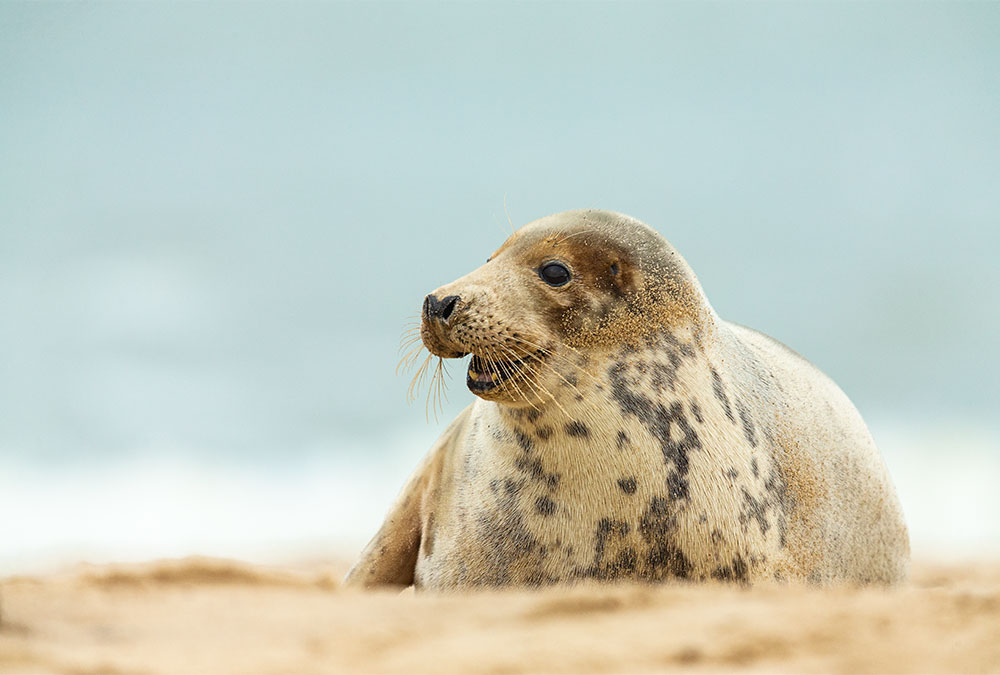 |
|||
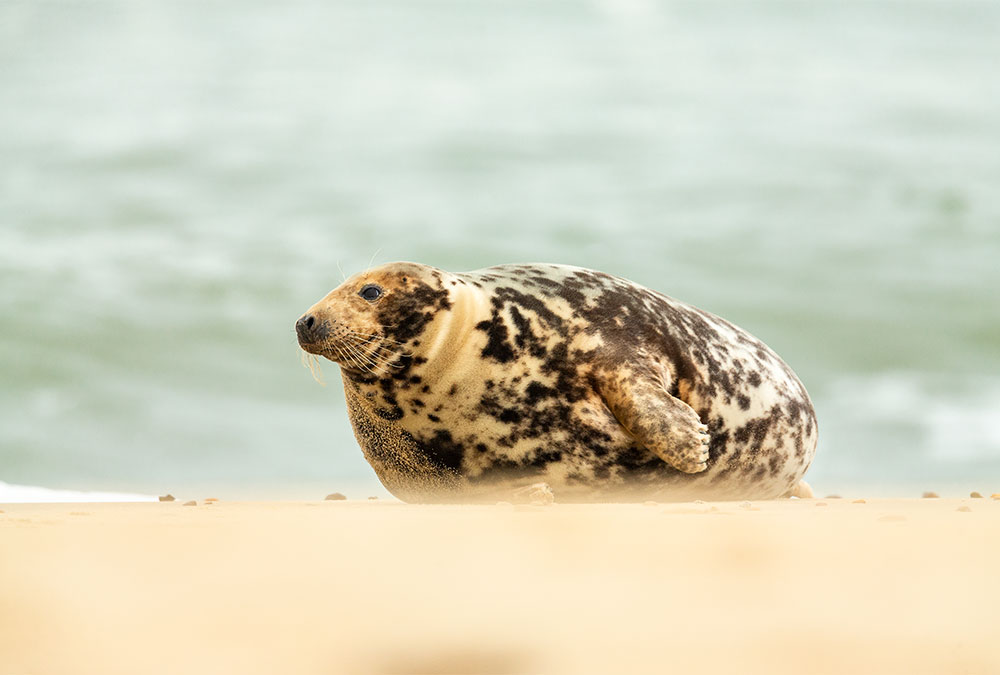 |
|||
|
|
|||
| Tuesday 19th November | |||
| Smethwick International Photographic Exhibition | |||
|
I have not entered many photographic competitions recently (Indeed I have only entered two competitions in 2019). But one competition that I try and enter every year is the Smethwick Photographic Society annual exhibition. This year I entered four images into their digital nature section. This year, I deliberately chose to enter images with a Scottish theme, allthough the exhibition is open to any natural history image. I am pleased to report that I had all four images accepted. I am also pleased to report that this image of a Red Grouse which was taken in Speyside, scored 15/15 and was awarded a Smethwick PS Ribbon. |
|||
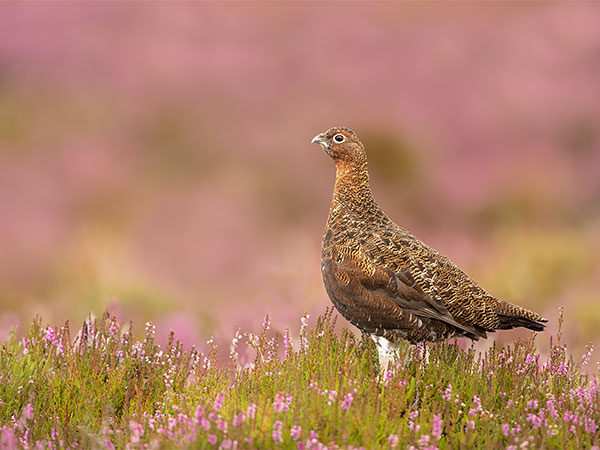 |
|||
| The other three images that were accepted into the Smethwick International Exhibition are shown below, they are Pine Martin, Great Spotted Woodpecker, and Common Dolphins. | |||
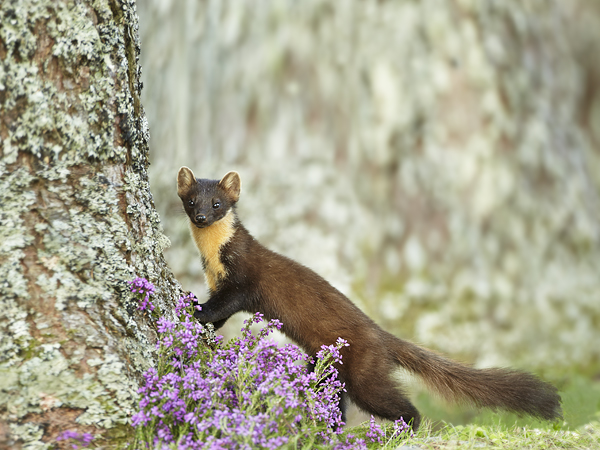 |
|||
.jpg) |
|||
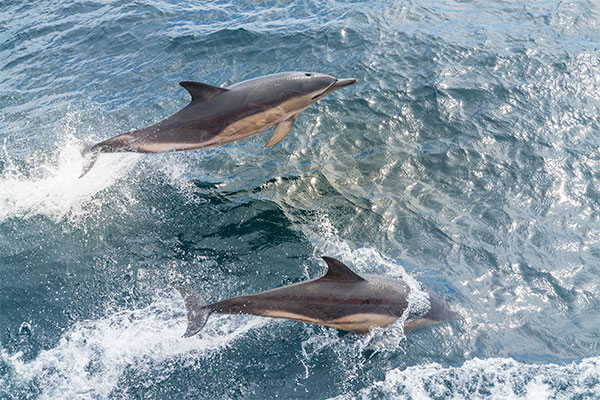 |
|||
|
|
|||
| Thursday 14th November | |||
| What Is Hiding On Your Hard Drive? | |||
|
One thing that I am quite bad at is sorting my images, when i get back from a photography session, I tend to download my images, take a back up copy and then process whatever images I want at that time. It is not unusual to then return to them to process a few more if I have another reason or project that requires particular images. But it is rare that I go through my images and really sort out those that I want to keep and those that need to be deleted. Recently, I have been sorting through my old images and have deleted many thousands of images that should have been deleted over the years. Indeed over 1TB of space has been freed on my hard drive. But whilst sorting through these images, I have come across quite a few images that have not been processed before. A small selection of these is shown below. |
|||
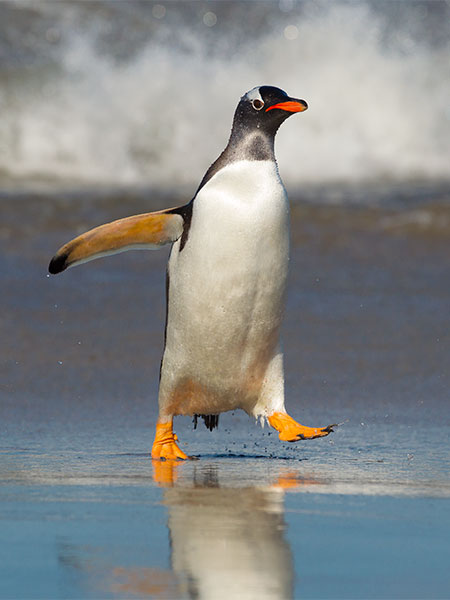 |
|||
| Gentoo Pengin enjoying the surf in the beaches of the Falkland Islands | |||
.jpg) |
|||
| Great Spotted Woodpecker on the lookout after hearing the noise of another bird. | |||
.jpg) |
|||
| Raven in the Taiga forests of Northern Finland close to the border with Russia, taken early in the morning as the sun was rising and lighting up the forrest. | |||
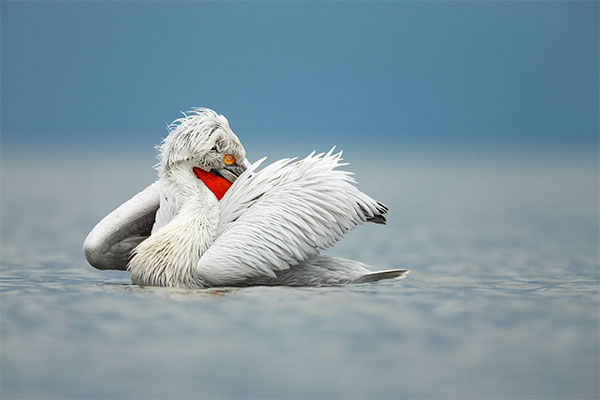 |
|||
| Dalmation Pelican from Lake Kerkini in Greece | |||
|
|
|||
| Friday 25th October | |||
| Snowdrops In October | |||
|
I guess that many people would look at the tile of this particualr blog post and assume that I have lost the plot. But nature has some items that are different to our expectations, one of which is the way that certain flowers appear outside of the "normally expected flowering season". Some of these are well known and a good example of these is Autum Crocus. Earlier this week, while out with my camera photographing fungi (see previous blog post below), I was lucky to find one of these out of expected season species that is not well known, the Autum Snowdrop. I had spent most of the day photographing fungi, and by the time I came across the snowdrops it was a bit late for photography. But it was certainly really good to see these flowers, there were 30+ clumps of flowers many of which had 5 to 10 flower spikes on each clump, so a resonable display. Some of the backdrops were messy, and by this time the light was not good. But I was pleased to see them and I plan to return in the next few days to try and hopefully get a few decent images. But while I was there, I managed this quick "grab shot" of one of the snowdrops. |
|||
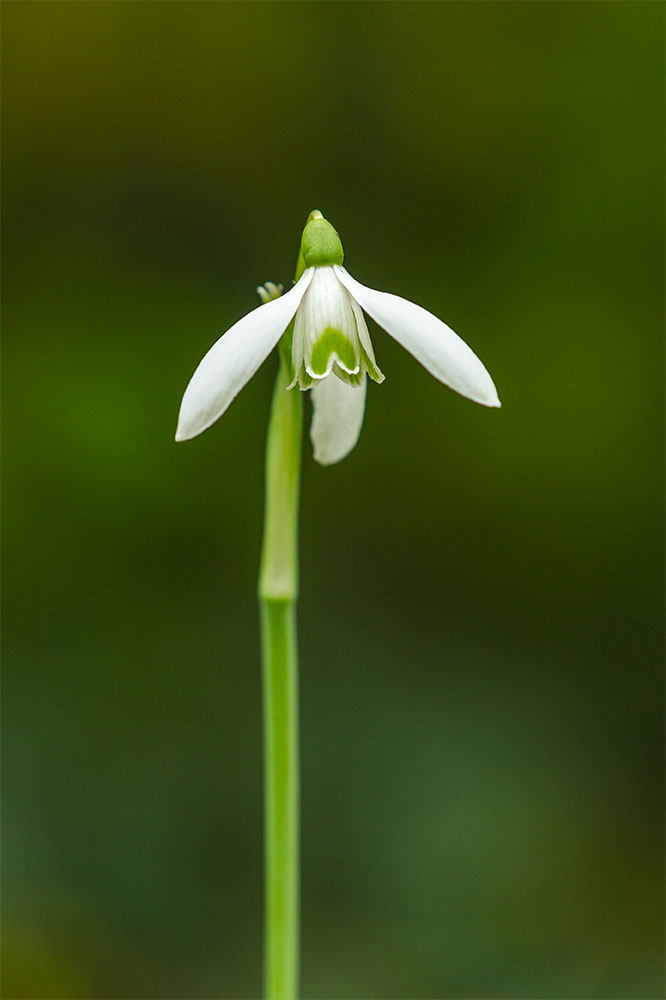 |
|||
|
|
|||
| Thursday 24th October | |||
| It Is Good To Photograph The Red Fungi Again | |||
|
Yesterday, I went to a very interesting photography lecture in Towcester which was entitled "Scotland The Big Picture", which was hosted by Towcester Camera Club. The lecturer was Pete Cairns who is a well known photographer who i have met on a number of occasions. With this in mind, I decided to have a day in Northamptonshire at one of my favourite locations for photographing flowers, fungi, and other macro subjects. There are many great fungi species that I want to photograph, many of which I have never seen, yet alone pointed my camera at. Unfortunately, over the past few years, I have not got myself focused (no pun intended) on fungi as much as I would like, so because of this and the fact that I had a friend with me that had not done much fungi photography, we we spent a plesant few hours on the lookout for any good fungi specimins to photograph. Whenever you are out with your camera, looking for fungi, there is one species that you are always on the lookout for. It is a species that I have seen many times, and have photographed many times, it is the iconic British fungi species that nobody should ever tire of either finding or photographing, the Fly Agaric. After a morning photographing odds and ends, we were given a location for a few Fly Agarics, so after a quick bite to eat, we headed back into the woods following the the earlier directions. |
|||
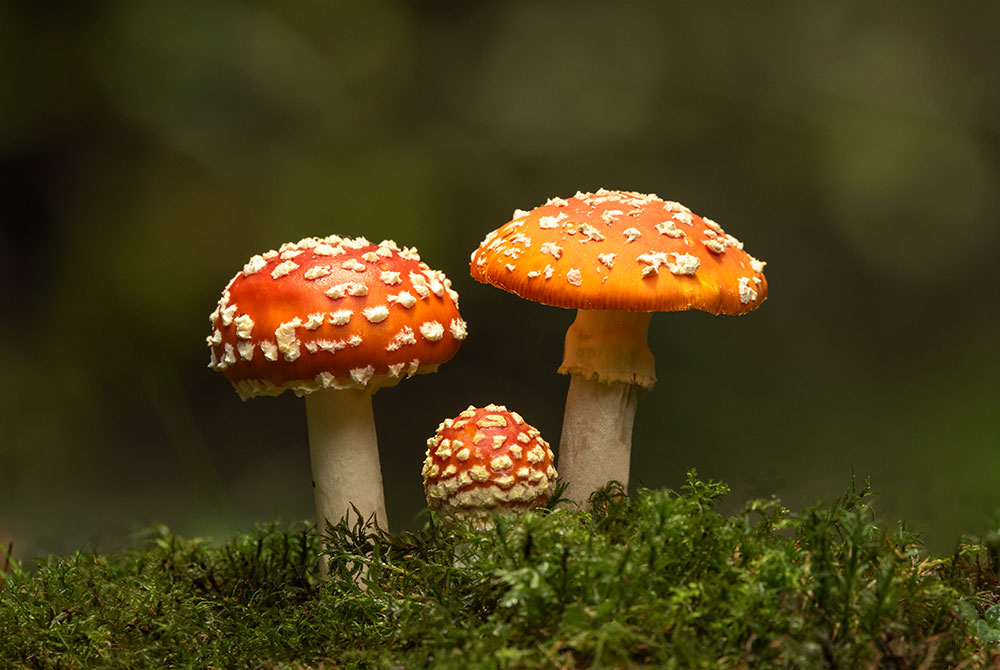 |
|||
|
This was the first time that my friend had photographed Fly Agaric fungi, and we certainly found a good example for us to point our cameras at. Hopefully sometime over the next week or so, we will manage a return visit and add a few more images to the collection. By the time we had finished photographing this lovely group, we decided to head to another area of the woods after another tipof, but this time it was for some wild flowers which had very unusually flowered in autum. We found the flowers, and only had time for a very quick "grab shot" of them. But hopefully they will also feature in tfront of my lens in the very near future. |
|||
|
|
|||
| Saturday 12th October | |||
| Parasols In The Rain | |||
|
Over the past few weeks, it has not been the greatest weather for photography, although to be fair, there are often plenty of good images to be photographed in the rain. But I guess it is more the thought of being out there in the rain is more off-putting than actually being out with my camera. It is, however, the time of the year for both fungi and the annual red deer rut, both of which make great subjects, the fresh air beckoned and I prepared my kit for a day out. It can be fun trying to capture images different from those that I already have, and with this in mind, I decided to spend a day with my friend Nigel Morgan seeing what we could find and photograph locally to me in Leicestershire. The day we had chosen was not the driest, and it certainly felt that the only way to stay dry was to find either an umbrella, parasol, or retreat to the nearest cafe for a very late morning breakfast. The breakfast was good, and we certainly enjoyed it whilst sitting in the dry for 45 minutes relaxing away from the rain. I always thought that parasols were designed to be used during hot sunny weather with their main purpose to provide you with shade. We saw plenty, of them and photographed a few including this one. |
|||
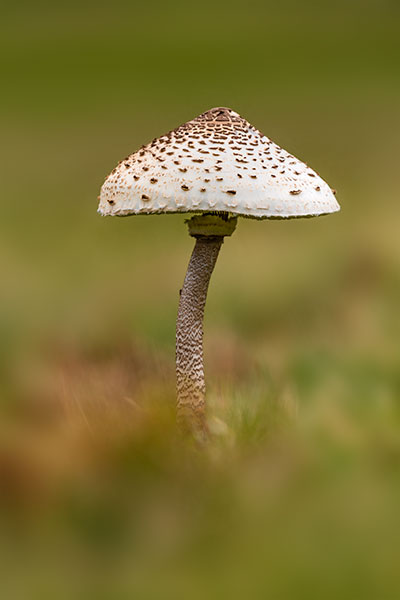 |
|||
| Despite the poor light and the rain, I enjoyed the morning out, and will definitely venture out again in the next few weeks in search of either deer or more fungi. | |||
|
|
|||
| Thursday 26th September | |||
| From Lewis To St Neots | |||
| One of the things that I enjoy when visiting photography societies and wildlife groups is answering questions and discussing images. Generally, speakers don't enjoy a silent audience and it is always good to have an interactive audience discussing the images, the subjects and other related questions such as either location or camera settings. | |||
| Earlier this week, I visited St Neots Camera Club and this image of a rock arch from Northern Lewis provided lots of comments on camera settings: | |||
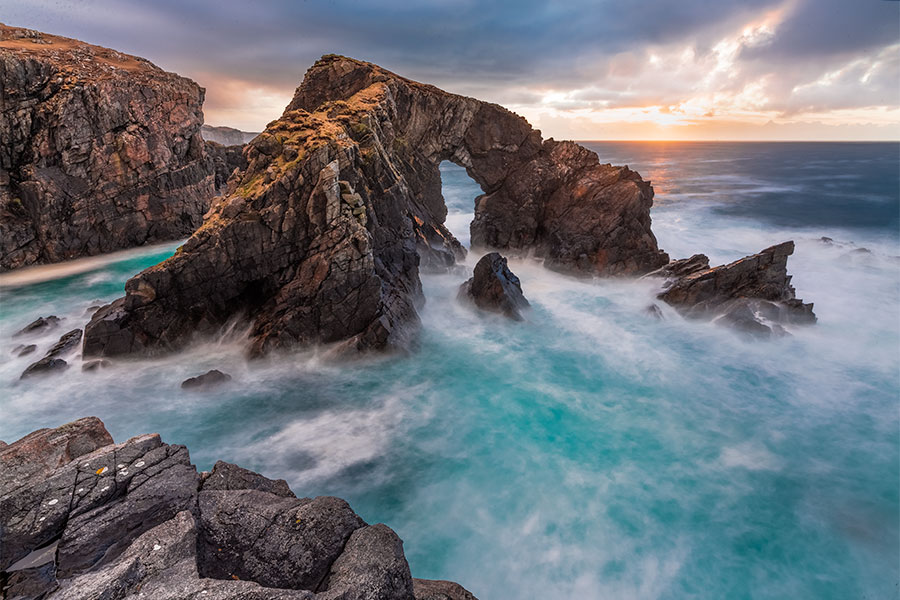 |
|||
| The image is one of favourite images from a visit to Harris and Lewis during April last year. It was a HDR image which was taken just before Sunset using a 10 stop ND filter. This resulted in a long exposure time (from memory about 20 minutes which allowed the resulting milky sea) | |||
| It is always good to receive feedback later, and I was also very pleased to receive the following email: | |||
|
"Just felt I should write to say how much I enjoyed your talk last night to St Neots camera club. I have to say I found your images truly inspiring and I came home resolved to improve, which after all, is the aim we all have no matter what level our skills are. I love wildlife photography but your images took me to another level and I am grateful for the chance to hear about your adventures. I will be following your blog with interest in the future. I would also like to say how much I enjoyed your low light/long exposure landscapes and this will now become mini project of mine going forward. Thanks again" |
|||
|
|
|||
| Monday 23rd September | |||
| Two Images In The John Muir Trust "Wild Nature" Calendar | |||
|
I am pleased to report that a few months ago, I was approached by John Beatty who is the editor of the prestigious John Muir Trust "Wild Nature calendar, to enquire about the use of one of my images for their 2020 calendar. A few weeks later, John contacted me again to ask for a second image. I have received my copy of the calendar and am pleased that my images have appeared alongside those of some very well known photographers.
Last week, whilst in Scotland, I visited the John Muir Trust in Pitlochry, and spent an enjoyable hour looking at their exhibition. Indeed, I was also pleased to see the calendar for sale in many other shops during my visit. |
|||
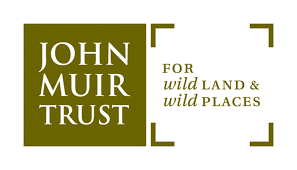 |
|||
.jpg) |
|||
| My two images are published below, the September image is of two common dolphins which was photographed in the Hebrides, whilst the June image is of a Chequered Skipper Butterfly which was photographed in Western Scotland | |||
 |
|||
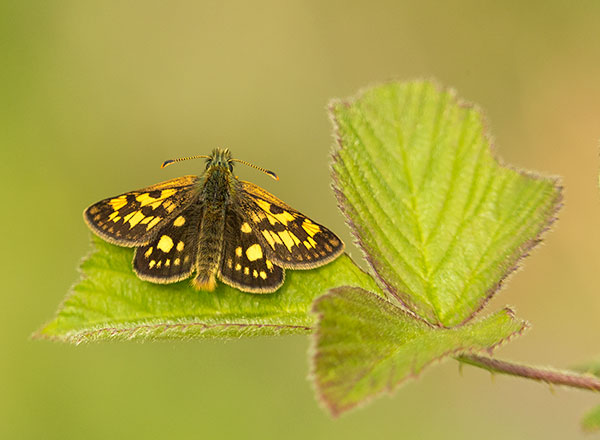 |
|||
| For further details of the Wild Nature calendar, please visit: https://wild-nature.co.uk/calendar | |||
| Further details of the John Muir Trust, please visit: https://www.johnmuirtrust.org | |||
|
|
|||
| Monday 3rd September | |||
| Adders In Ardnamurchan | |||
| During the past few weeks, I have been back in the Hebrides where once again we were lucky enough to see most of the commonly seen wildlife of the area including both White Tailed and Golden Eagles, Minkie Whales, Dolphins, Common Porpoise, Otters, Puffins, gannets, etc. | |||
|
But one species that I did not expect to see was the Adder. But, last week, we were walking along a quiet area of the Ardnamurchan peninsular hoping to see some Scotch Argus butterflies when I saw something interesting looking. I quietly asked the rest of the group to stay still and quiet. As a result, we all had reasonably good views of an adder before it slowly disappeared into the undergrowth. |
|||
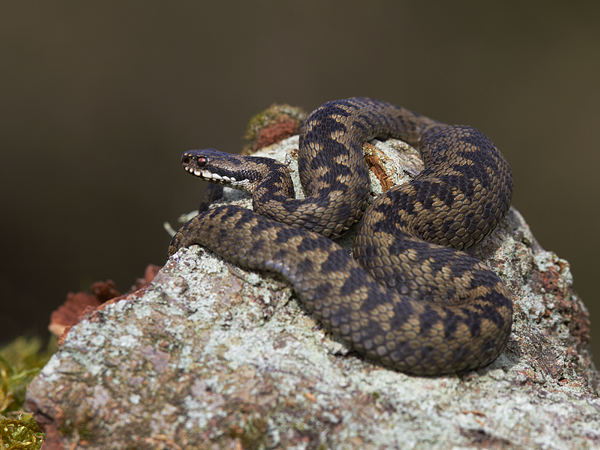 |
|||
|
It was a really good morning and luck was obviously with us as we also saw quite a few Scotch Argus butterflies along with many other species. But we also saw a slow worm sunning itself on some moss only a few hundred yards from the adder. Whilst I had expected to see several butterflies including both Scotch Argus and painted lady, I certainly did not expect to see either an adder or a slow worm, yet alone both. Unfortunately, they were both too quick for any photos. Therefore I have included an image of an adder that I photographed a few years ago. |
|||
|
|
|||
| Friday 30th August | |||
| St Kilda Dandelion | |||
| St Kilda is well known for two endemic species, these are the St Kilda Wren and the St Kilda Mouse. I have been fortunate to have seen the St Kilda wren on each of the occasions that I have visited St Kilda, but I have yet to see the St Kilda mouse. I have heard that the mouse is relatively easy to see if you are prepared to wait for a while quietly in the remains of the old village. | |||
|
Not long ago, a new endemic species was discovered on St Kilda which is much less abundant, and this is the St Kilda Dandelion. It is different from the dandelions found in the other islands in the Hebrides and the British mainland. Indeed when it was scientifically studied, it was studied, it was found to be closer to the dandelion species in Greenland. It is thought that the species may possibly have been introduced as windblown seed from Greenland. |
|||
| I was only made aware of the St Kilda dandelion earlier this year (by Tony Mainwood who was a guest on a visit to St Kilda that I was working on as a wildlife guide. As we were fortunate to spend the best part of three days on this island, we decided to keep an eye out to see if we could spot the species. | |||
| As there is only this one dandelion species on St Kilda, this made the task much easier (at least we did not have to check every dandelion that we found to see if it was the St Kida species!!) | |||
| During our visit, we saw lots of great wildlife, stunning views, and saw a total of three dandelions. | |||
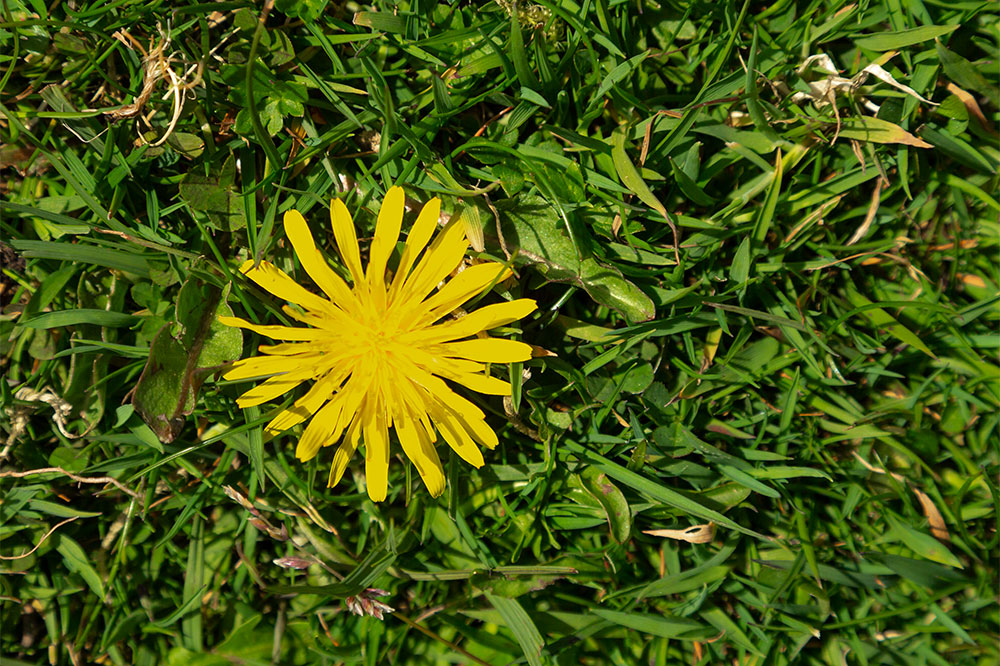 |
|||
|
It would be fair to say that this is not the most interesting of all of the British flower species that I have photographed, but it is one of the rarest. It is also one of the hardest in terms of getting to the location, and once there it is hard to find. Indeed the St Kilda Ranger who I discussed these with, had not managed to find any during her stay on the island. |
|||
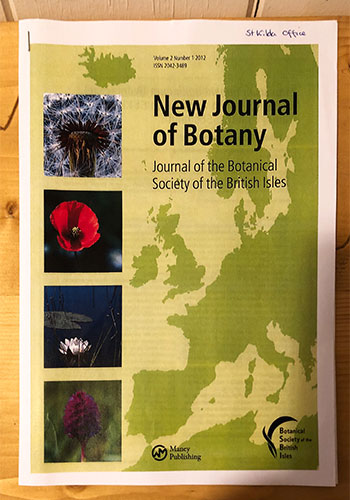 |
|||
|
|||
| Whilst on St Kilda, I was discussing the endemic species found on the island with the National Trust ranger, and she kindly showed me this document which was produced by the "New Journal Of Botany", as shown above. | |||
|
|
|||
| Thursday 25th July | |||
| Minkie Whales | |||
|
Marine Mammals have always proved a fascinating species for me and I have wanted to see and photograph these for many years. If I had to name the mammal species that I most wanted to photograph, then both Blue and Humpback Whales would be very high on that list. Over recent years, I have been fortunate to have spent quite a bit of time at sea where I have seen a variety of both whales and dolphins. During the past few years, I have managed to cover over 12,000 nautical miles during which time I have seen a few large whales at a distance whilst in Arctic waters. We also saw about a dozen Beluga Whales in Svalbard along with a huge Greenland Whale that had died and was providing much-needed food for 20+ Polar Bears. Back in British waters, I have seen Orca on two separate occasions, once in the Hebrides about ten miles west of Canna, and more recently on my "Around Britan" trip when another was spotted between Shetland and Fair Isle. These whales cover huge distances and there is an outside chance it may have been the same whale. But the species that I have seen the most is Minkie Whale. Back in 2016, whilst in the Minch, we were really lucky and had 17 confirmed sightings in one day including a few pictures. But this was exceptional, and generally, a sighting is much less frequent. On average, I would expect to see at least 3 or 4 during a week in the Hebrides and sometimes during a good week, the number can reach double figures. |
|||
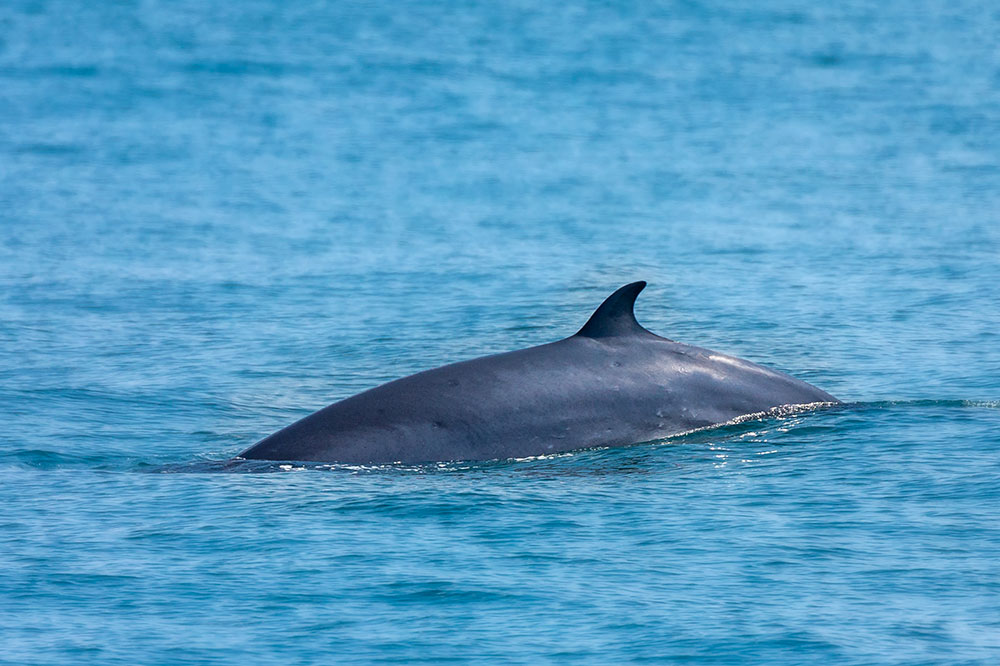 |
|||
| Like all my wildlife, landscape, and marine photography, it is great to get images with a blue sky (or in the case of dolphins, whales, and other sea creatures with the blue sea). But it is such a privilege to see these lovely animals that I usually take photos of them whenever I get the opportunity. | |||
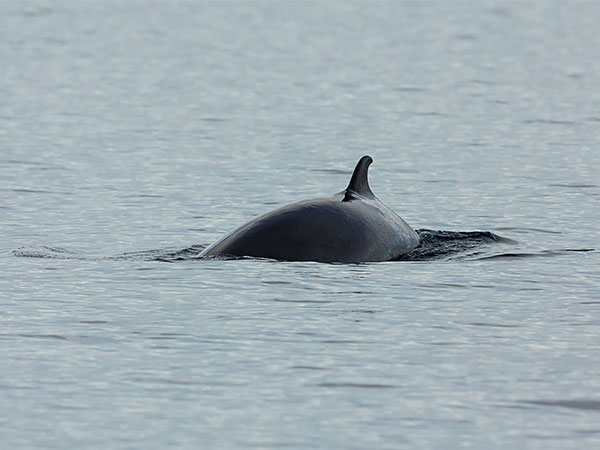 |
|||
|
Whales are generally long-lived (although like many species, they are suffering the effects of pollution). But obviously, nothing will live forever. Whilst walking on the tiny Hebridean island of Muck last week, we came across a skeleton on the beach. I am not an expert on skeletons, but given the size, shape, and location, I presume it is from a Minkie whale. It takes a long while for a dead whale to rot down, and there was not much left (as can be seen in the photos below) so it is probably correct to presume that it has been here for at least two or three years relatively undisturbed. We also saw both Golden and White-tailed Eagles nearby, and whilst the remains were probably not suitable for food for them in the current state, I think this may have been a good food source during the previous few years. |
|||
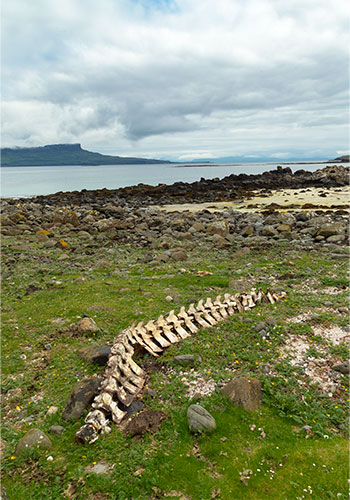 |
|||
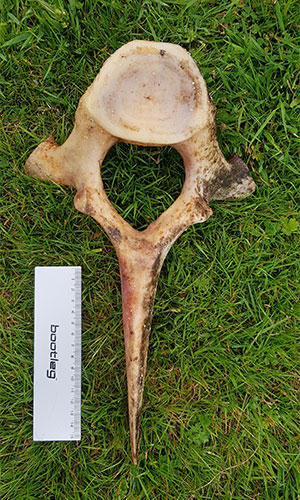 |
|||
| It is not every day that I get the opportunity to see whales or their remains. Thank you to my two walking companions (Alan and Alan) for a great day on Muck and your help with the pictures) | |||
|
|
|||
| Tuesday 23rd July | |||
| The Lovers Stone And The Mistress Stone | |||
|
Two of the famous landmarks of St Kilda are both natural stones that are located high on the main ridge. These are the "Lovers Stone" and the "Mistress Stone", both of which can be seen below. |
|||
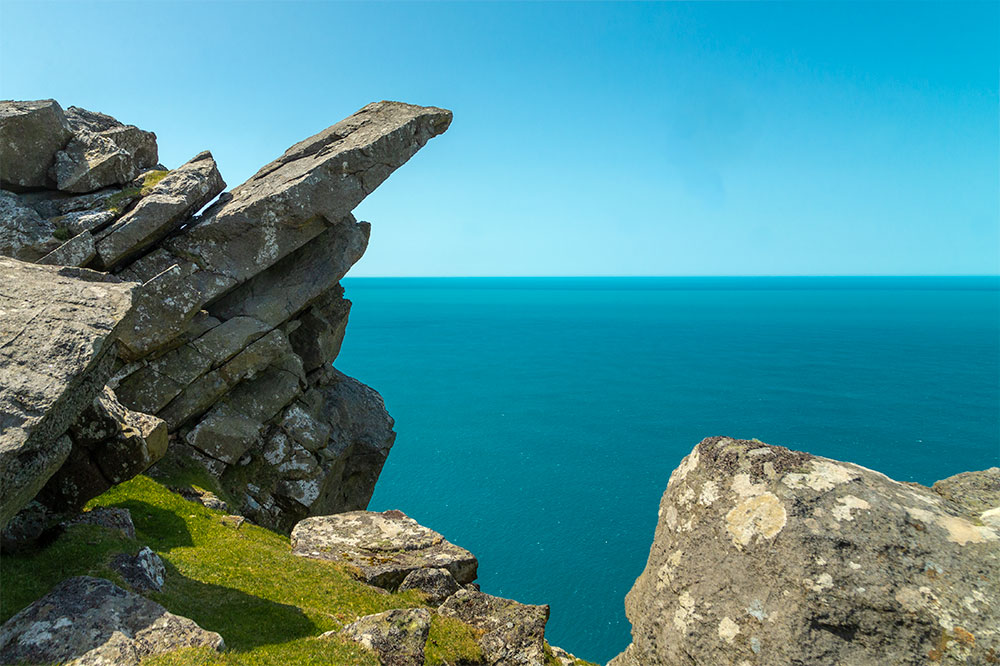 |
|||
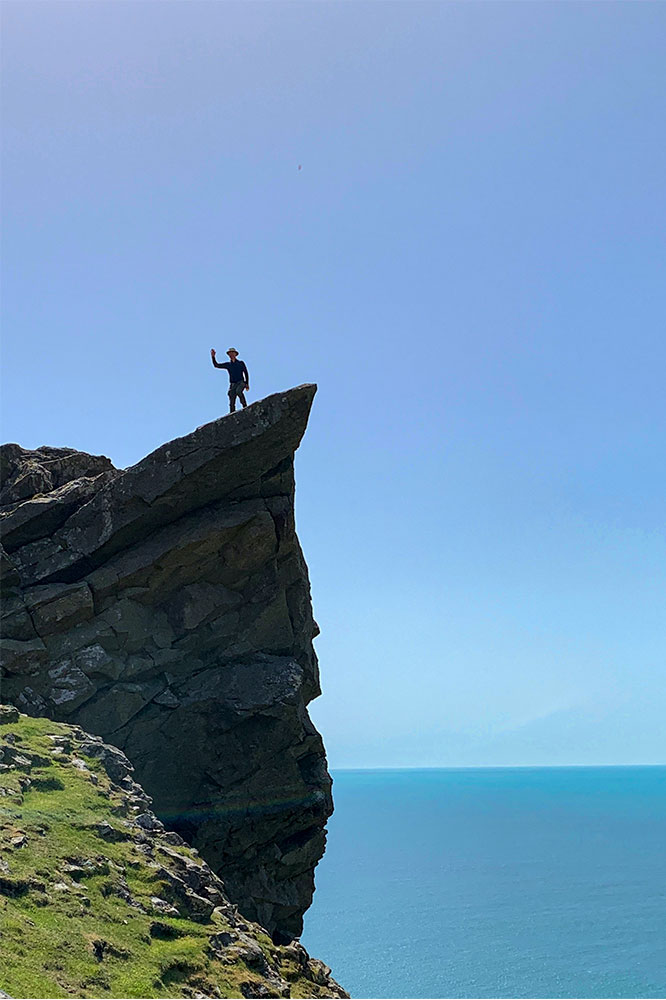 |
|||
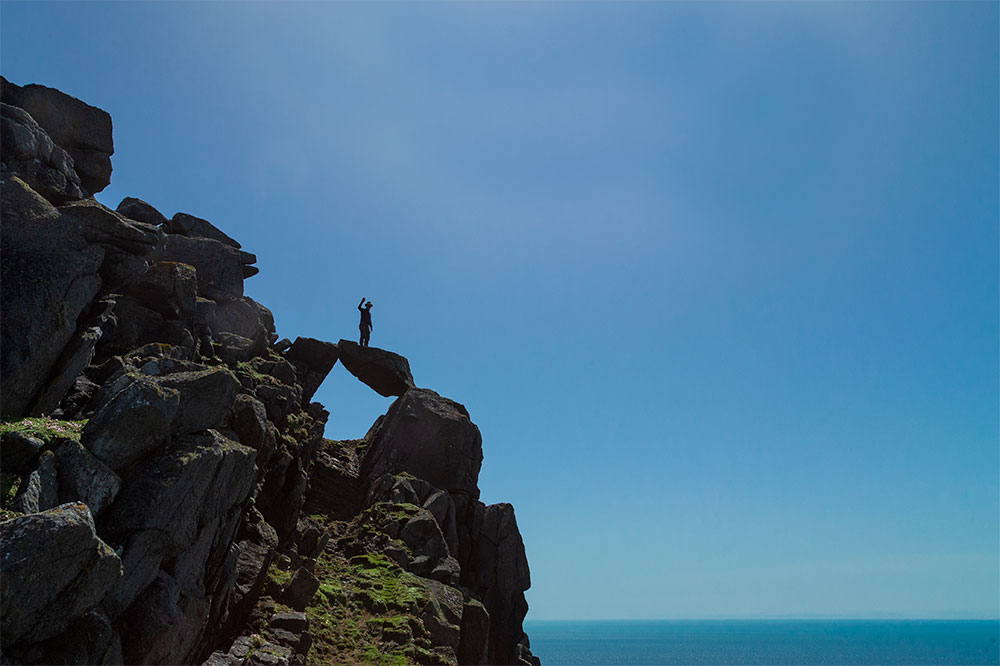 |
|||
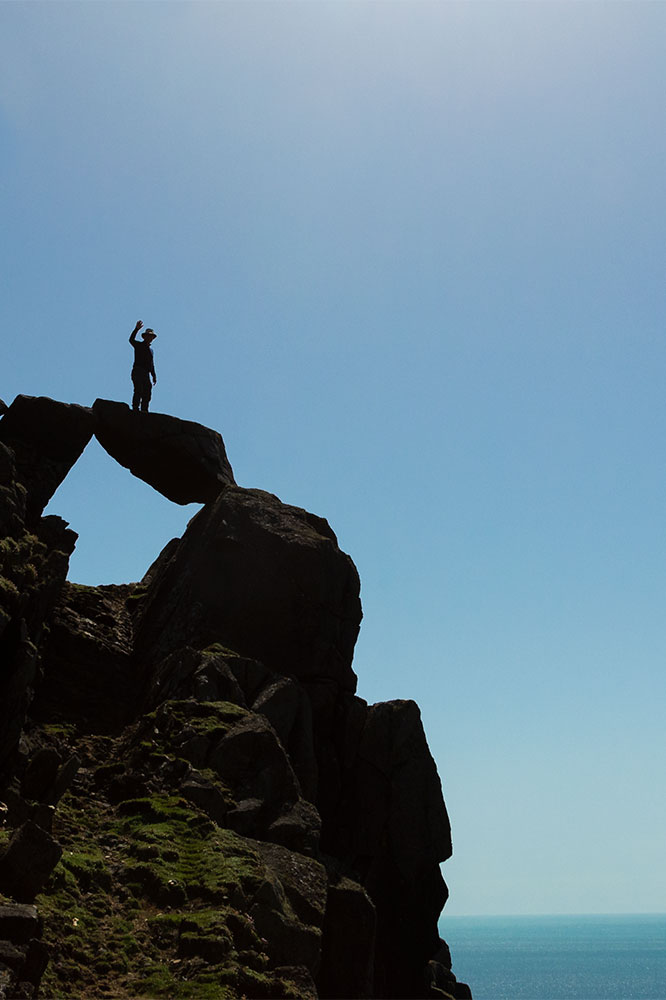 |
|||
|
|
|||
| Tuesday 16th July | |||
| Great To Return To St Kilda | |||
|
I have been fortunate to have visited many islands around the British coast, and have really enjoyed both exploring and photographing them. The last time that I visited St Kilda, it was very grey and the islands were covered in clouds which can in itself be very atmospheric and is definitely worthwhile. But It was also good to return a couple of weeks ago where the weather was very warm and as a result, the sky was blue. We arrived just after midday, and the rest of the day exploring Village bay. The following day we ascended to the summit of Conachair which is the highest point of the main island of Hirtra. |
|||
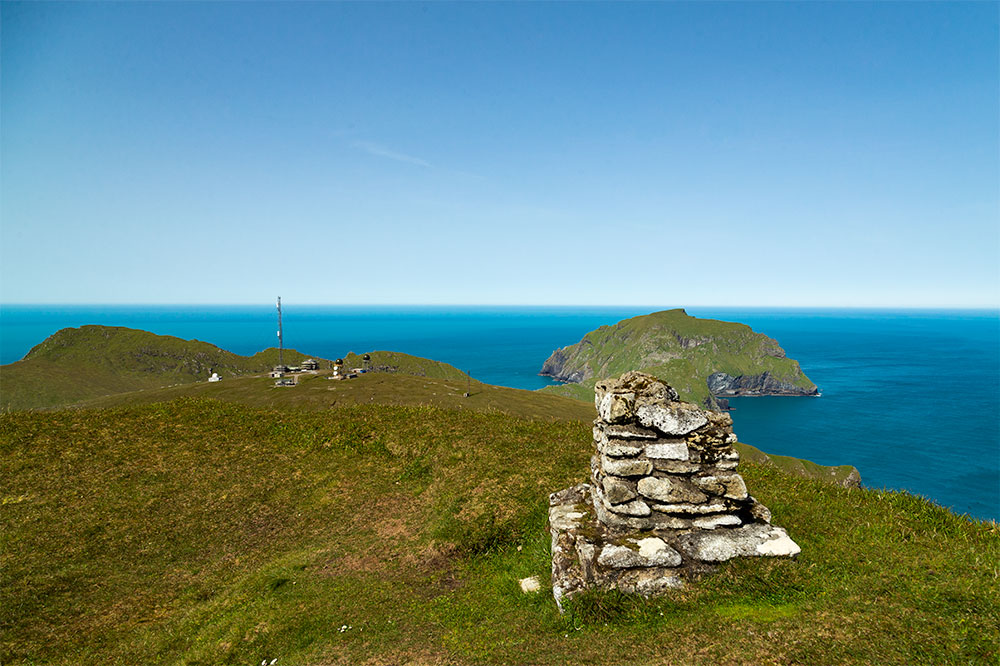 |
|||
| Above is the summit of Conachair, whilst below is the view of Village Bay with one of the MOD masts visible on the skyline. | |||
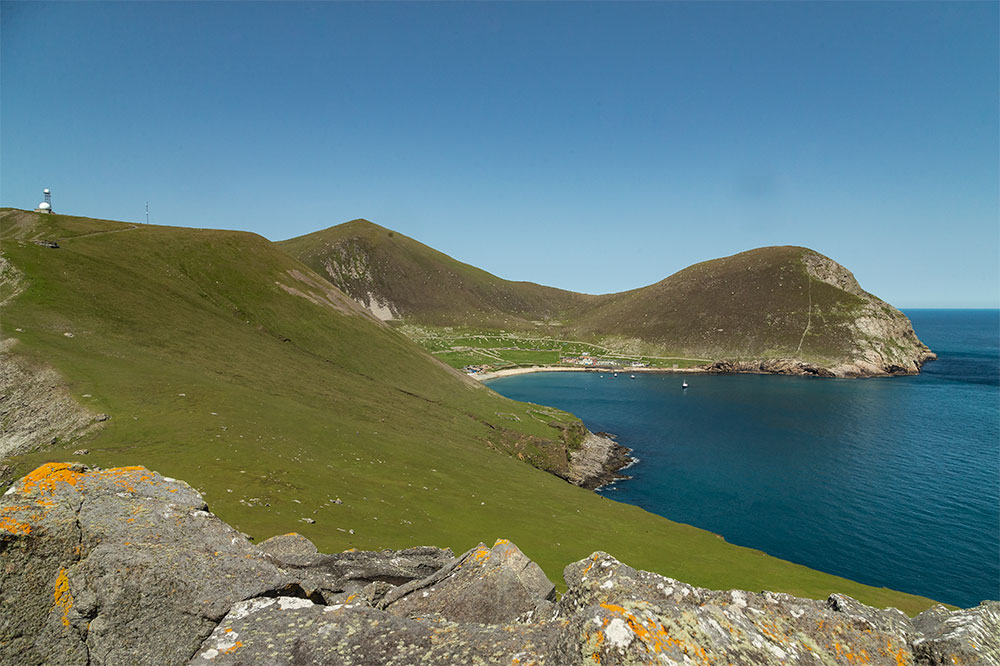 |
|||
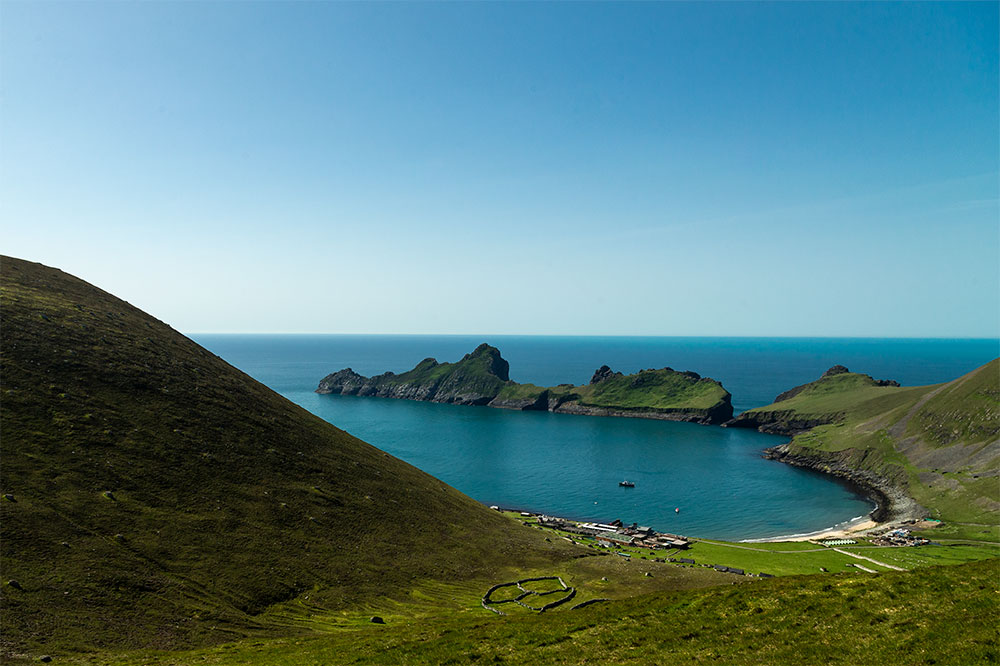 |
|||
|
Above, Village Bay with the island of Dun in the background. While below shows the separate island of Dun. Dun is one of the main puffin colonies in the St Kilda chain were at the last survey there were an incredible 55,000 puffins. |
|||
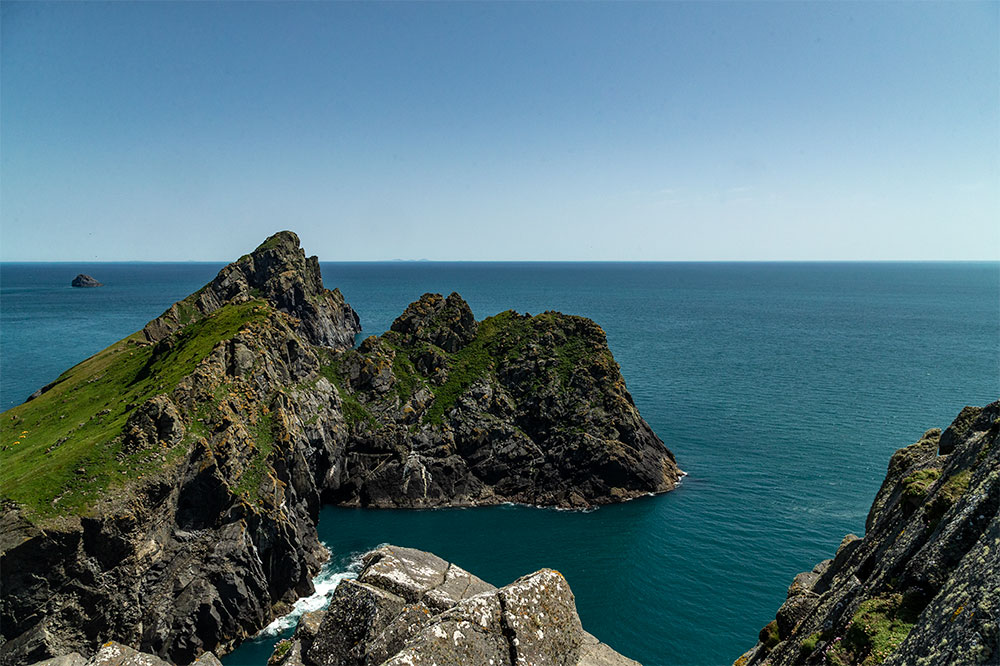 |
|||
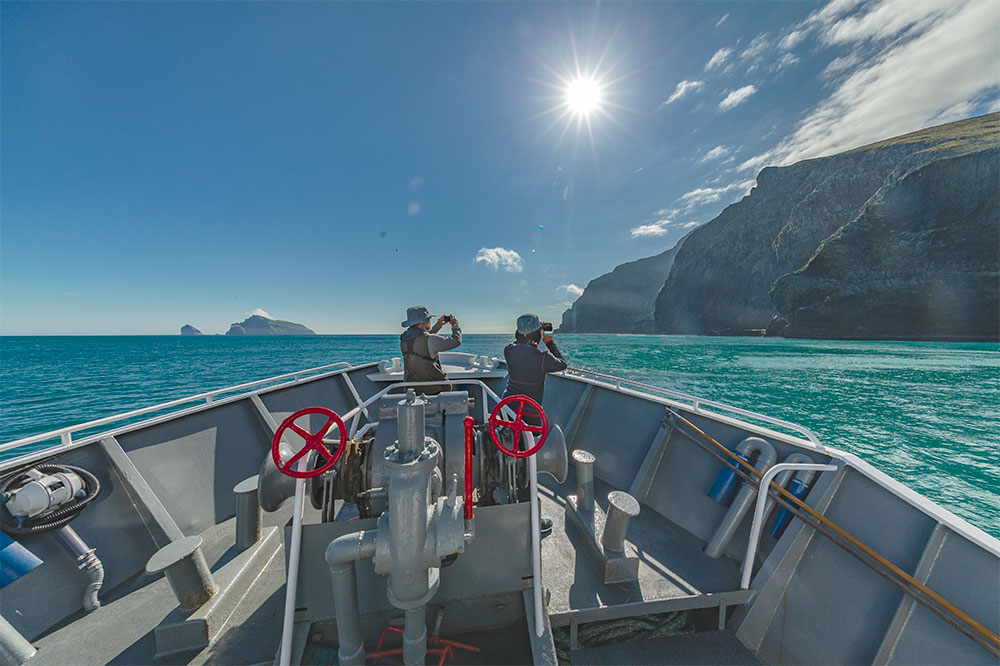 |
|||
| The Ministry of Defence have had a long association and presence on St Kilda, the most obvious sign of this is the many communication and radar masts, offices and the accommodation a few items can be seen below. Currently, the MOD is upgrading their buildings on Hirtra and as such, there is much more impact during the building work. But hopefully, this is a short term impact as many of the older outdated building will be replaced with newer, greener, buildings that have much less impact on the environment of this world heritage site. | |||
 |
|||
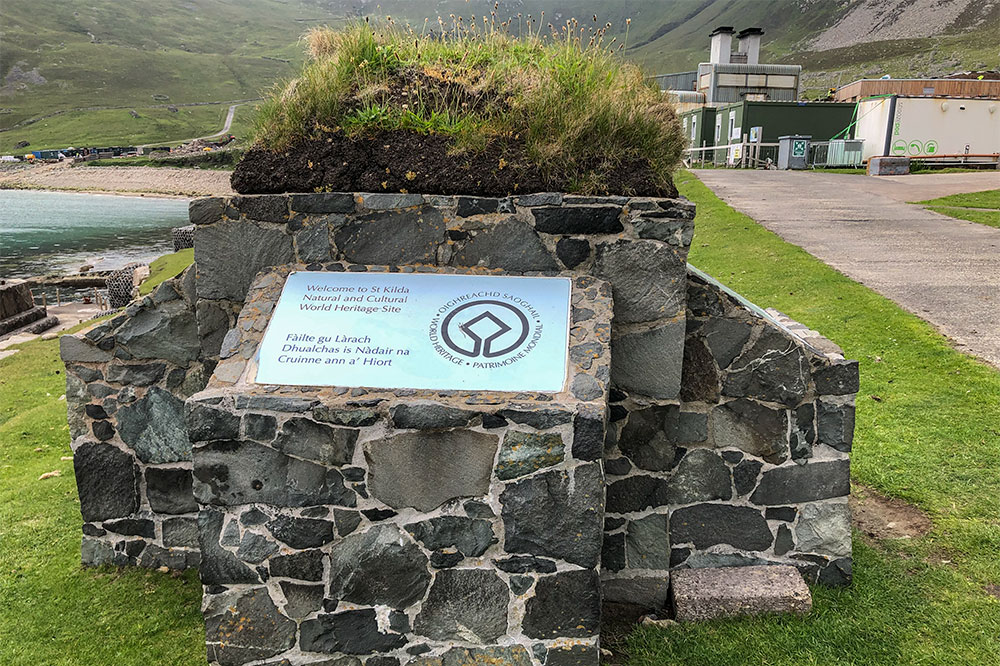 |
|||
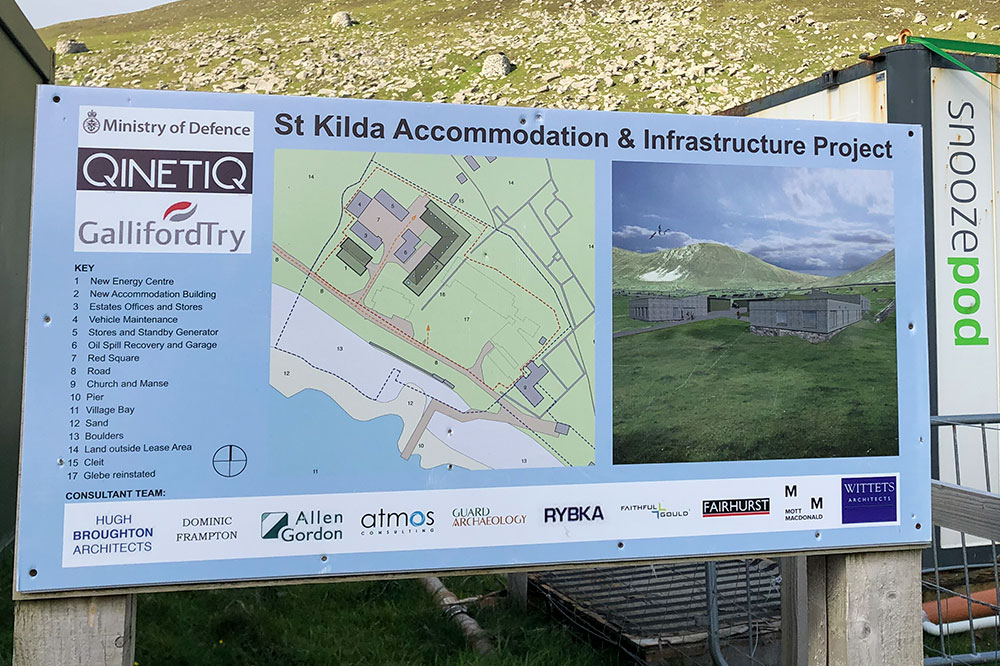 |
|||
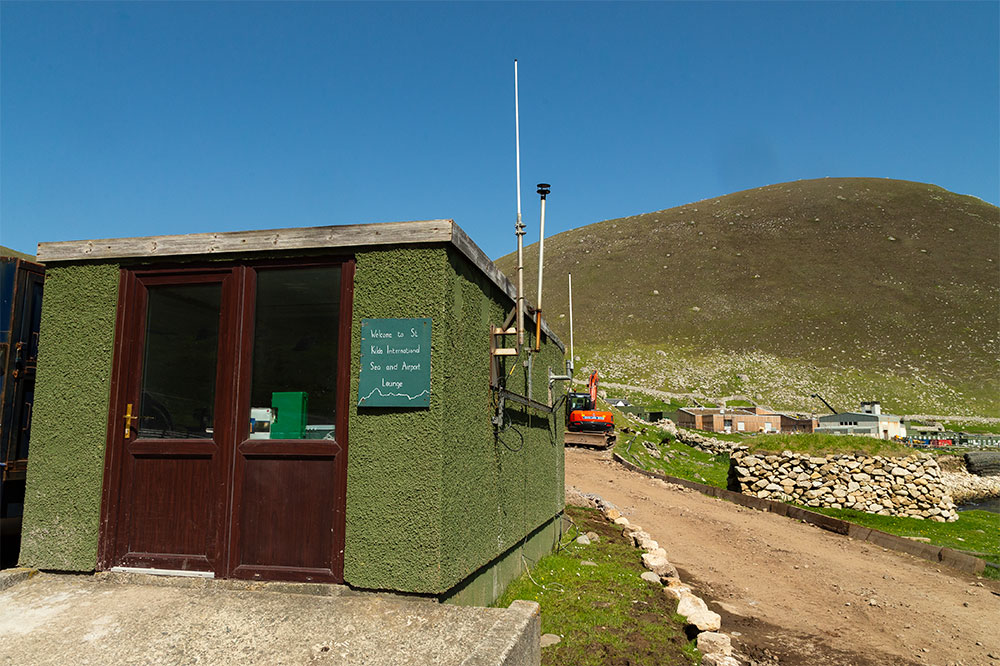 |
|||
|
|
|||
| Thursday 13th June | |||
| Do Not Look Down | |||
|
I have always liked images looking down, perhaps I should purchase myself a drone. Whilst in the Arctic last year, I used my widest lens to take some images from the crow's nest of the Havsel, and this year whilst sailing on Tonic, I took the opportunity to ascend the mast to help with some maintenance when a bulb needed changing. The image was taken whilst we were in Fair Isle, and obviously, I also had in mind that this may be my only opportunity to photograph this particular boat from above using an 11mm lens which was my widest lens that I took on this trip. |
|||
.jpg) |
|||
|
|
|||
| Monday 12th June | |||
| Tonic | |||
|
The yacht in which I sailed around Britain is named "Tonic" and is owned by Elite Sailing based at Chatham Maritime Marina. it is their largest yacht which they use for their "adventure sailing" program. The boat is 46 feet in length and was manufactured by Bavaria Yachts. She had plenty of room for the professional skipper/instructor from Elite and crew, which ranged from 5 to 7 additional people. In general, terms, the longer the yacht is at her waterline, the faster she will sail. Tonic was certainly fairly nippy, and it was fairly easy to average over 7 nautical miles per hour almost all of the time, indeed it was not uncommon for this to rise to over 10 nautical miles per hour on occasions. |
|||
.jpg) |
|||
.jpg) |
|||
.jpg) |
|||
.jpg) |
|||
|
Length: 14.48 meters Beam: 4.48 meters Draft 2.1meterss Displacement: 13,000 kg Engine: Volvo MD22P 59HP Diesel Diesel Fuel Tank: 230 Litres (51 gallons) Water Tanks: two 230 liters and 360 liters Anchor: 45 lb with 60 meters of 10mm chain |
|||
.jpg) |
|||
|
|
|||
| Friday 9th June | |||
| Around Britain In "Tonic" | |||
|
It is always nice when you have a purpose for any journey, and earlier this year, I set off on a 47-day journey to sail all around the British coast in a single journey in a 46-foot sailing yacht named Tonic. The journey started (and finished) at Chatham Maritime Marina and was on an "adventure sailing" trip with Elite Sailing who are based in Chatham. The trip was split into six legs, each had an instructor from Elite sailing and various customers who joined the yacht as crew. Each member of the crew would take part in all of the daily day activities which included: planning, sailing, navigation, cooking, cleaning, and many other associated tasks. Although there was the instructor on board, the crew had the opportunity to skipper the yacht, during which time they planned the route for the journey along with the organisation of the watches, and all sailing and organisational duties. Not everyone decided to take up this role, but I did so on about a dozen passages which totaled over 500 miles and included some quite long sections including Lowestoft to Whitby, Stromness to the Summer Isles, Islay to Bangor (Northern Ireland), etc. This was worthwhile and I am pleased that I volunteered for these. Tonic was reasonably sized at 46 feet in length, The number of crew varied from 5 to 7, and people joined for various legs ranging from a single leg through to the complete 7 week trip around Britain. |
|||
| The blue line on the chart below shows the route which was over 2500 miles in total | |||
.jpg) |
|||
| Back in the mid-1990s, I did a few weeks sailing with a friend who had his own boat. This was mostly a few trips around the Thames estuary as his boat was based at Walton on the Naize. We also chartered a boat in Scotland and a small group of us had a very pleasant week around Mull. This was many years ago, and although I have spent many days at sea during the past few years, I have long since lost touch and had not been on a sailing yacht until earlier this year. | |||
| During the seven weeks, I took around 6400 photographs, and now have the task of sorting these out. As time allows, many of these will be added to my website, but in the meantime, I have added a couple of images below. | |||
.jpg) |
|||
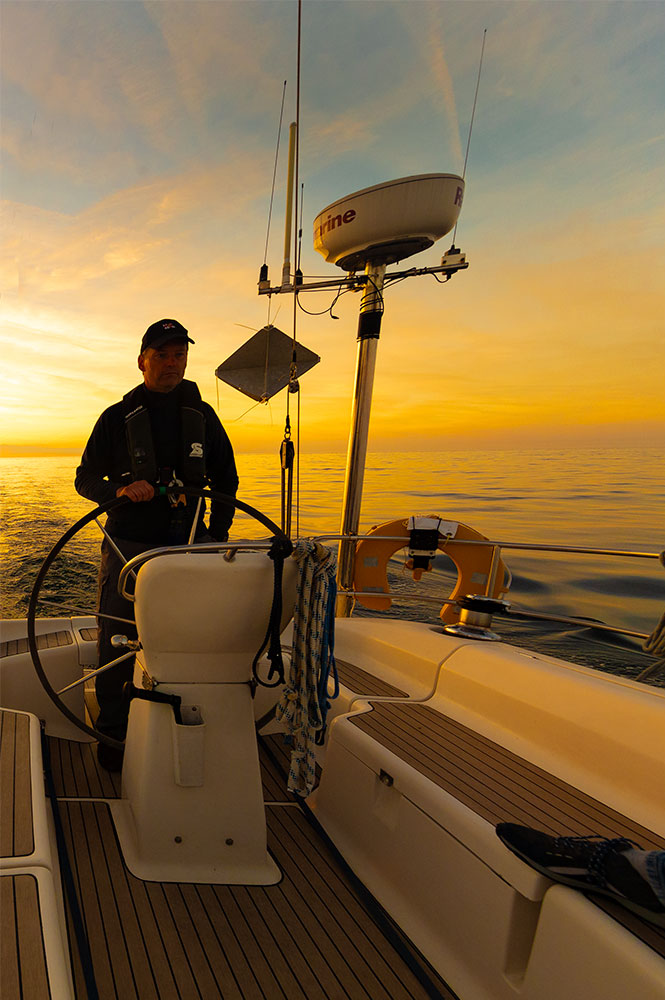 |
|||
|
|
|||
| Tuesday 16th April | |||
| Sailing Around Britain | |||
|
I am pleased to have added another new talk to my collection of talks for photographic societies, wildlife groups, and other interested groups: This is the story of my single journey of over 2500 miles in a 46 foot Bavaria yacht that sailed around the circumference of Britain in a single seven-week journey. The trip visited many small harbors and anchorages that are not accessible to larger boats, thus seeing some wonderful coastline and a great variety of wildlife including many seabirds and marine mammals. |
|||
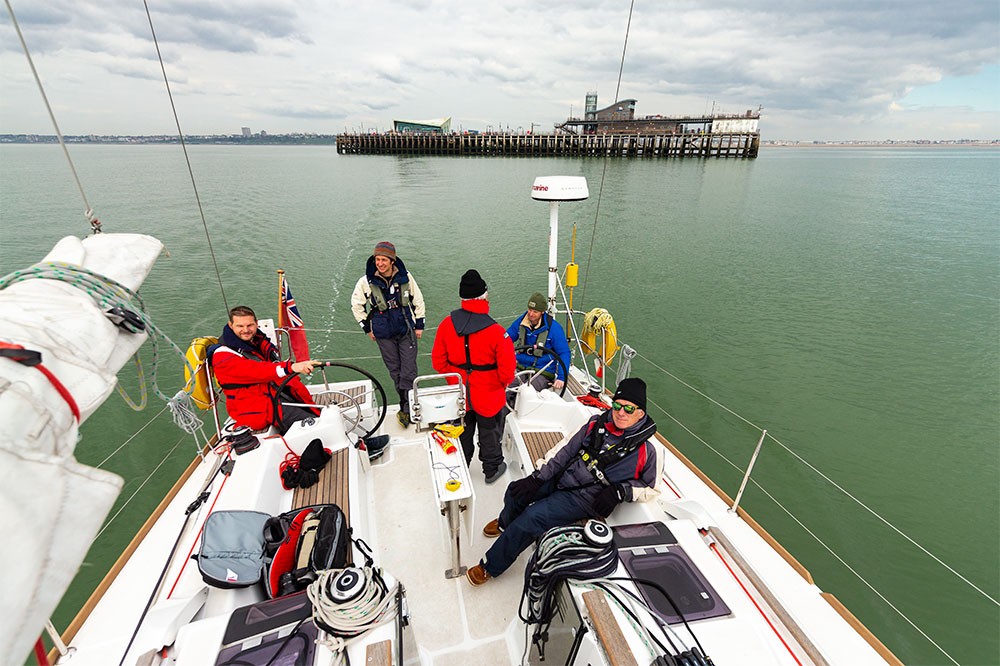 |
|||
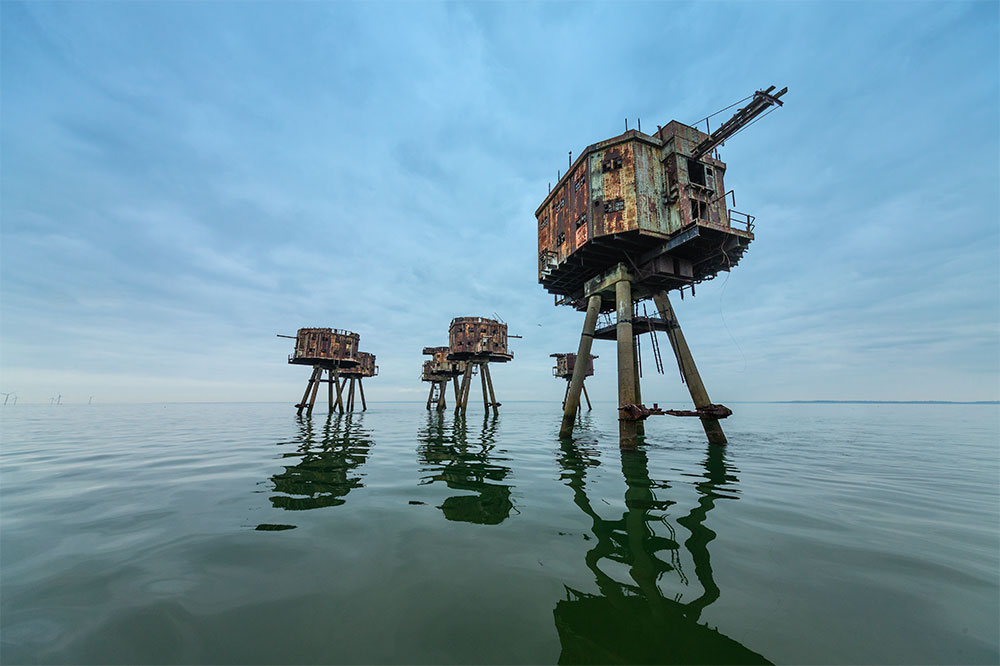 |
|||
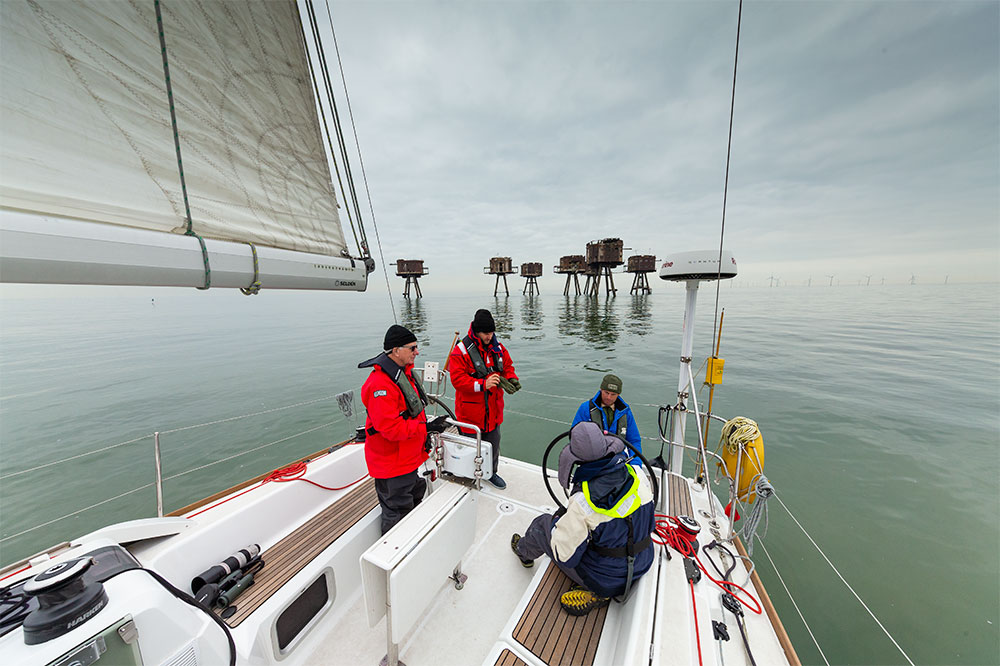 |
|||
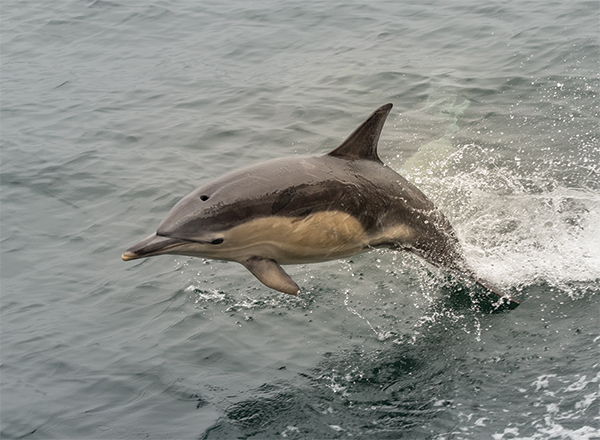 |
|||
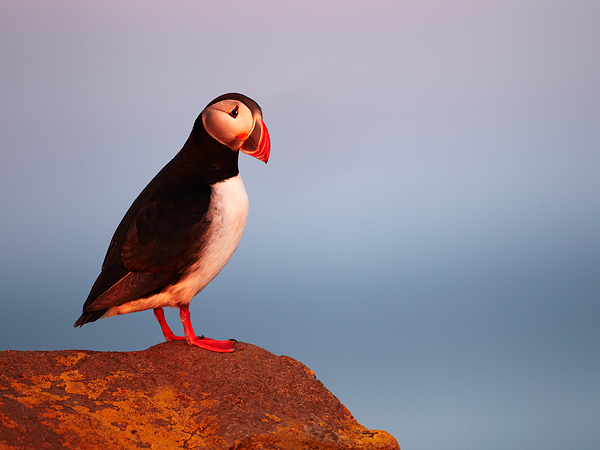 |
|||
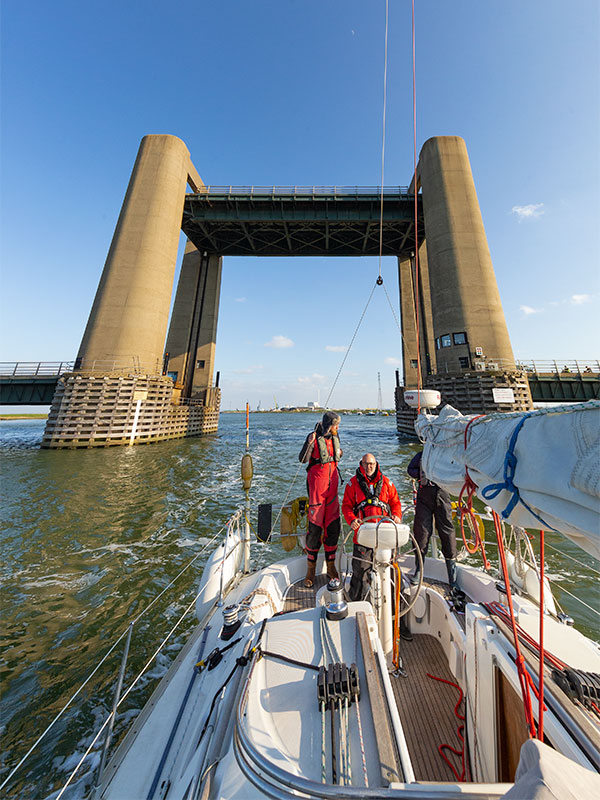 |
|||
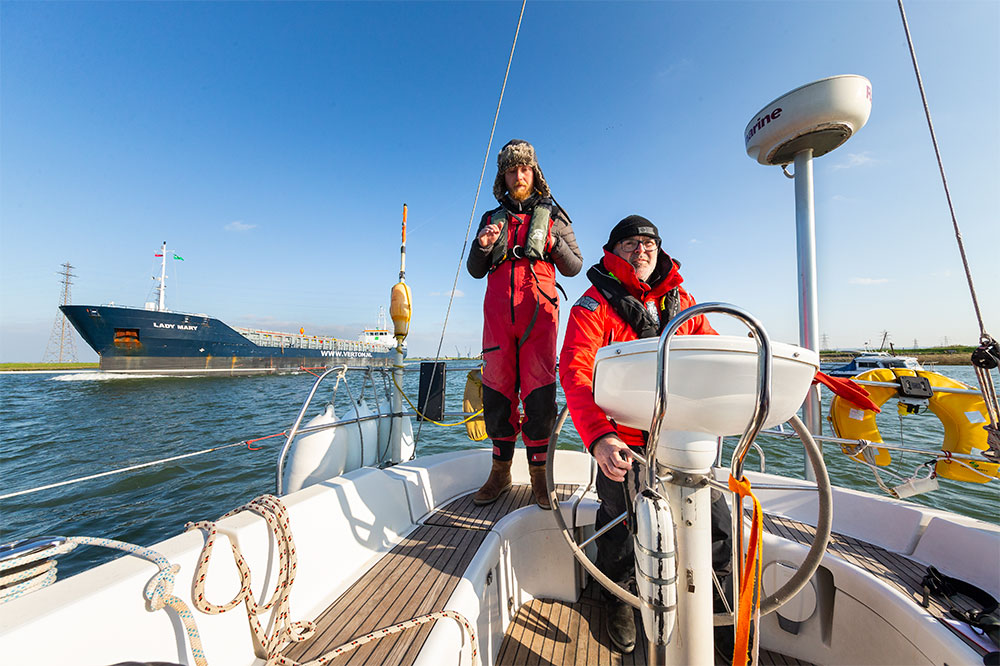 |
|||
|
|
|||
| Thursday 14th March | |||
| Success At Royal Photographic Society Nature Group 2019 Exhibition | |||
|
One of the things that I had decided to do in 2019 was to enter a few more photographic competitions and exhibitions. So far this has not resulted in many entries, indeed my only entry of the year to date has been in the annual exhibition of the Royal Photographic Society Nature group. But I am pleased that I entered and I am delighted to report that when I got my results back today, I was awarded the gold medal for this image of a Waxwing. I entered four digital images into the "all creatures" section and all four were accepted, but really pleased to have won the gold medal this year, especially as I have not entered this competition before. |
|||
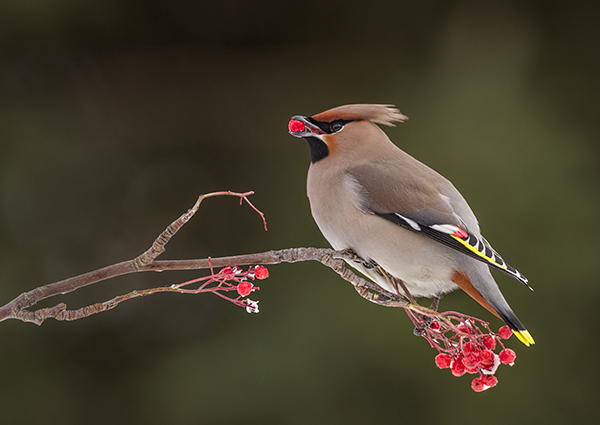 |
|||
|
|
|||
| Wednesday 6th March | |||
| First Voyage On The Open Seas In 2019 | |||
|
Later on this year, I will be back in the Hebrides, and I am obviously really looking forward to getting back on the sea again. It can be a long time between the end of the wildlife guiding each October before the new season arrives. Therefore, I decided to do some personal sailing this year, and this is something that will be added to this blog in a few months time. But in the meantime, I spent 9 days in Chatham last week doing some theory and sailing. The boat seemed small compared to the boats I have traveled on in recent years, but it was very enjoyable. We left Chatham maritime marina, passing through two lock gates and into the Medway. Next was an overnight visit to Queenborough before continuing into the Thames Estuary before venturing north along the east coast to the busy ports of Harwich and Felixstowe. From here we continued up the river Orwell towards Ipswich. Our destination was the village of Wolverstone. The return trip was quite windy and a bit more rough than the initial crossing, but really enjoyed the experience and am looking forward to some more sailing in a few weeks time. From a wildlife perspective, it was fairly quiet, but it was good to see lots of seals, a few gannets, and my highlight was Common Porpoise that was seen on three separate occasions. Took my camera along for the ride, and managed a few images including these below. |
|||
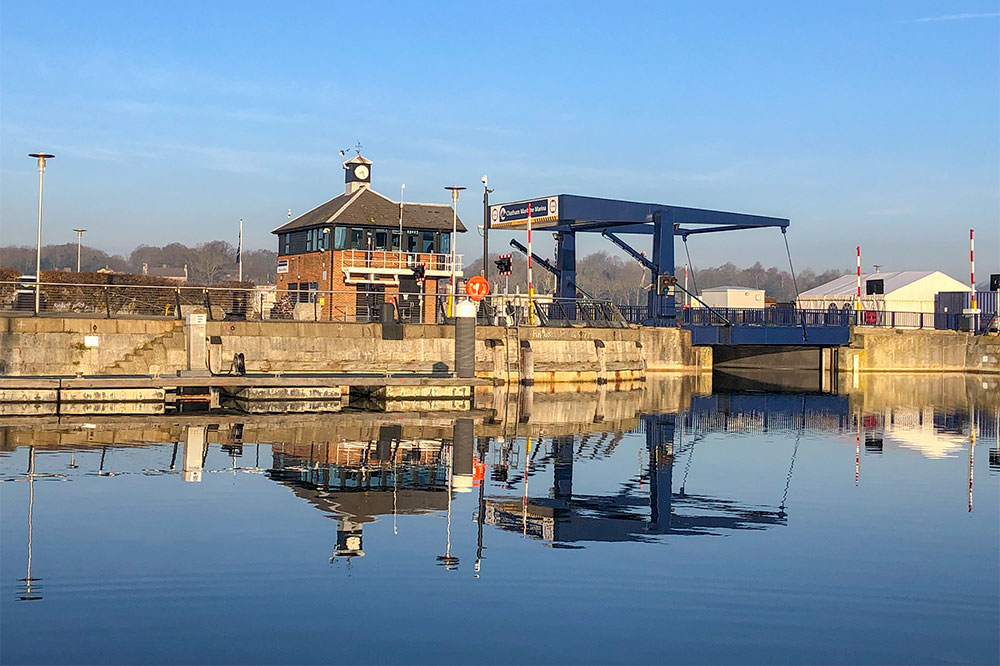 |
|||
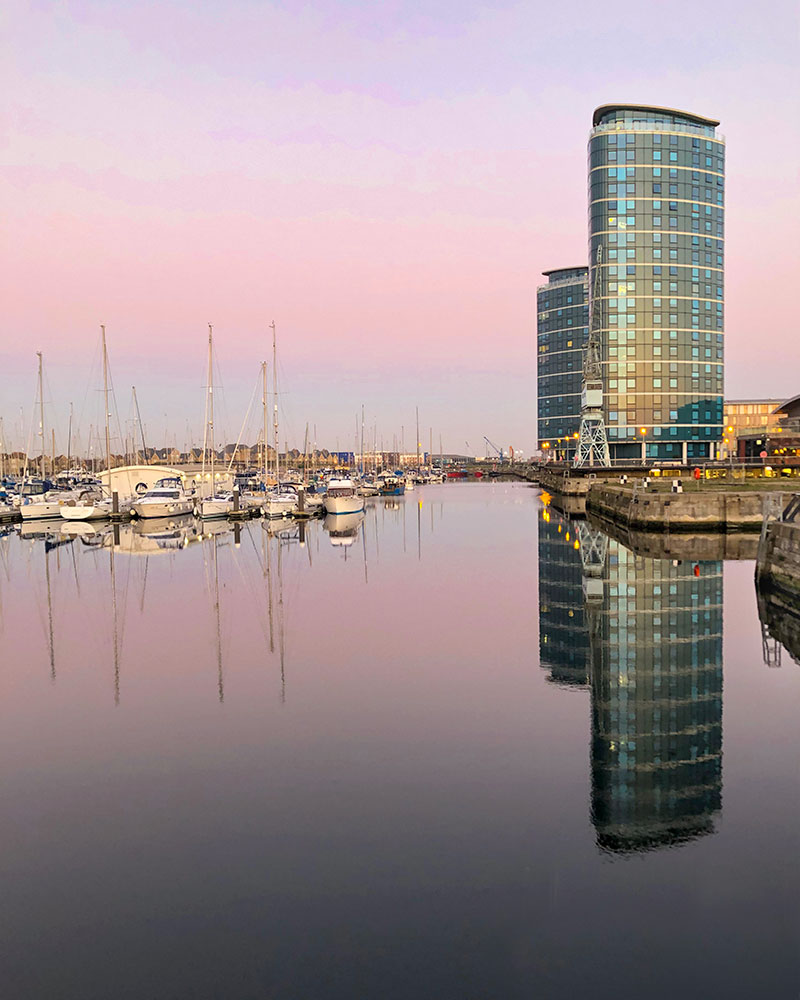 |
|||
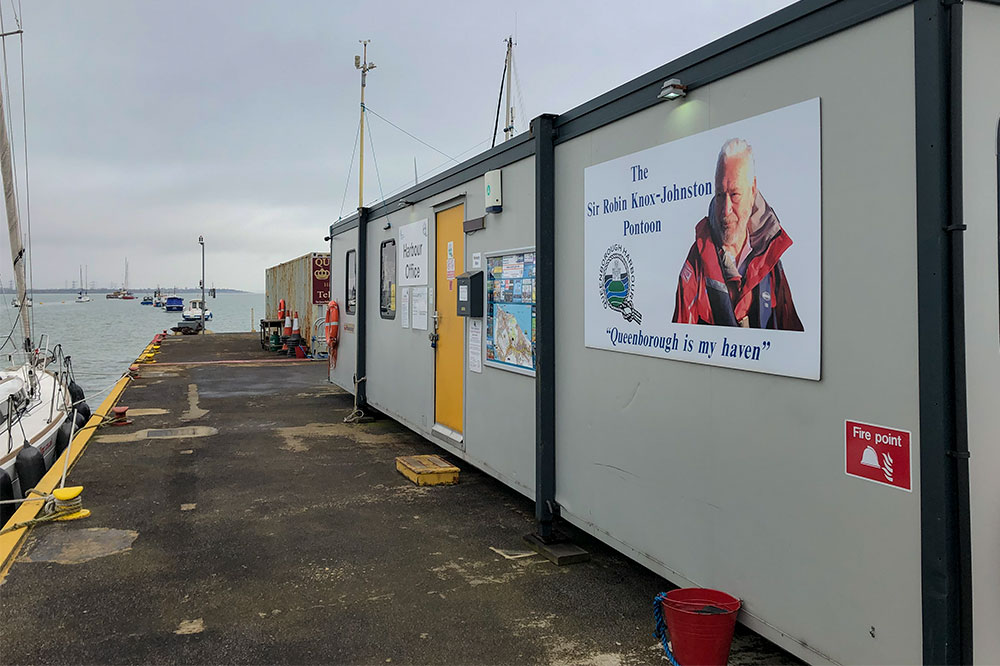 |
|||
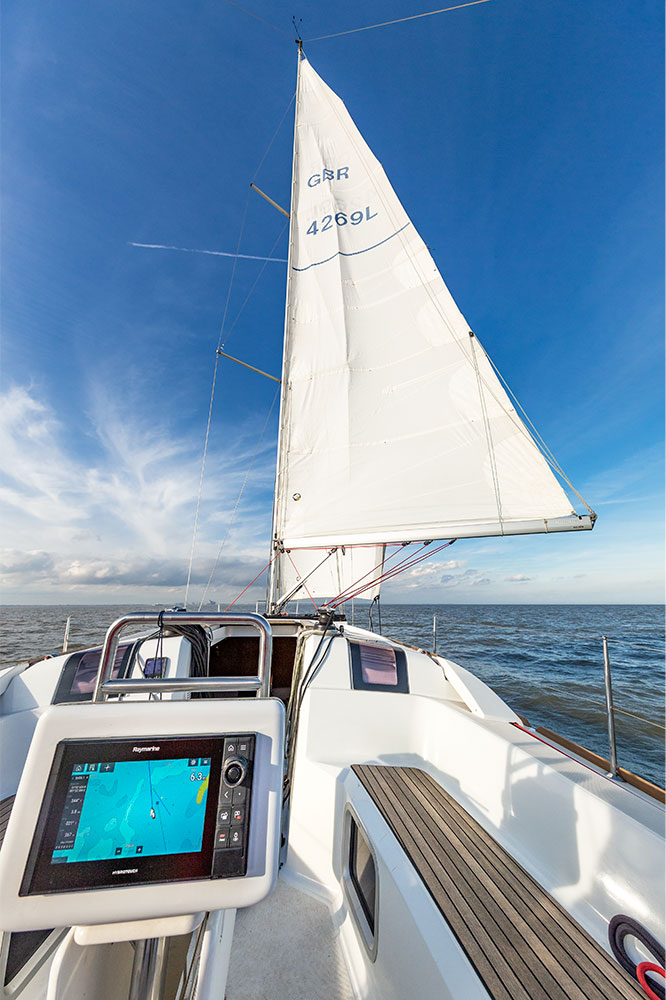 |
|||
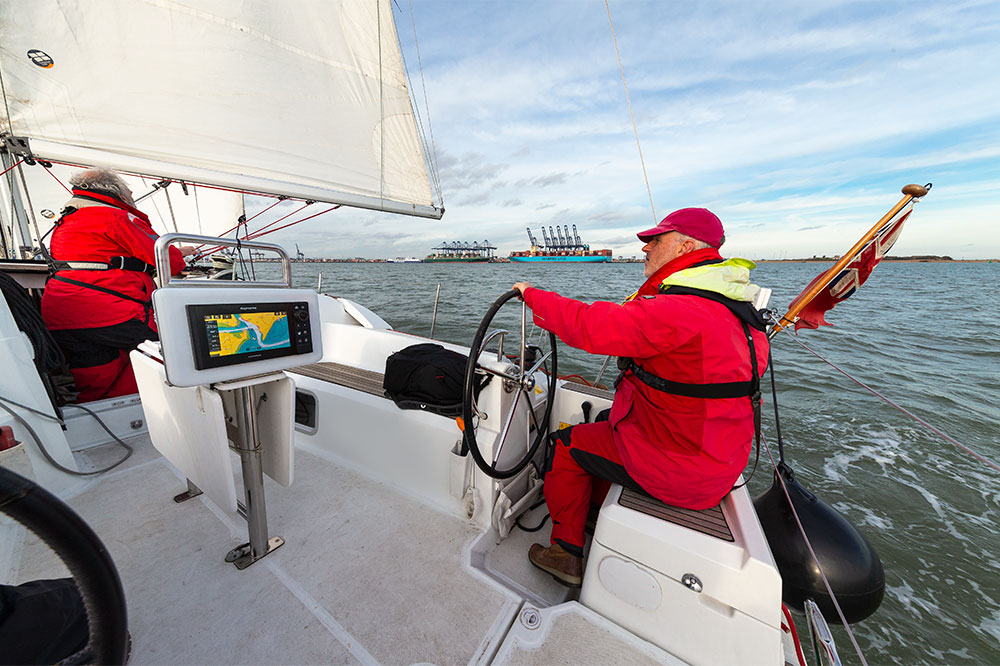 |
|||
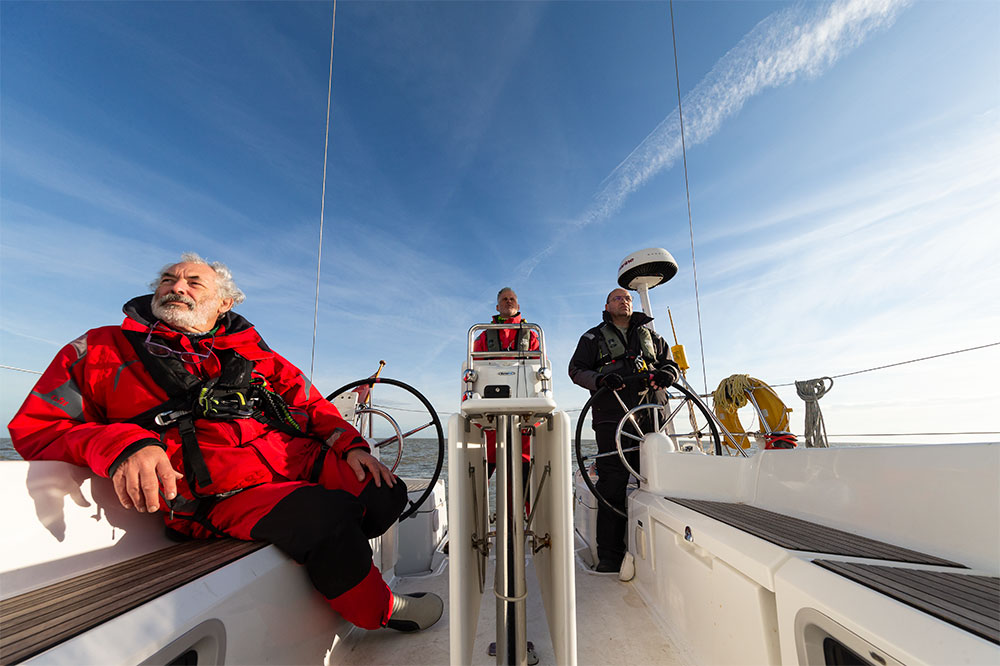 |
|||
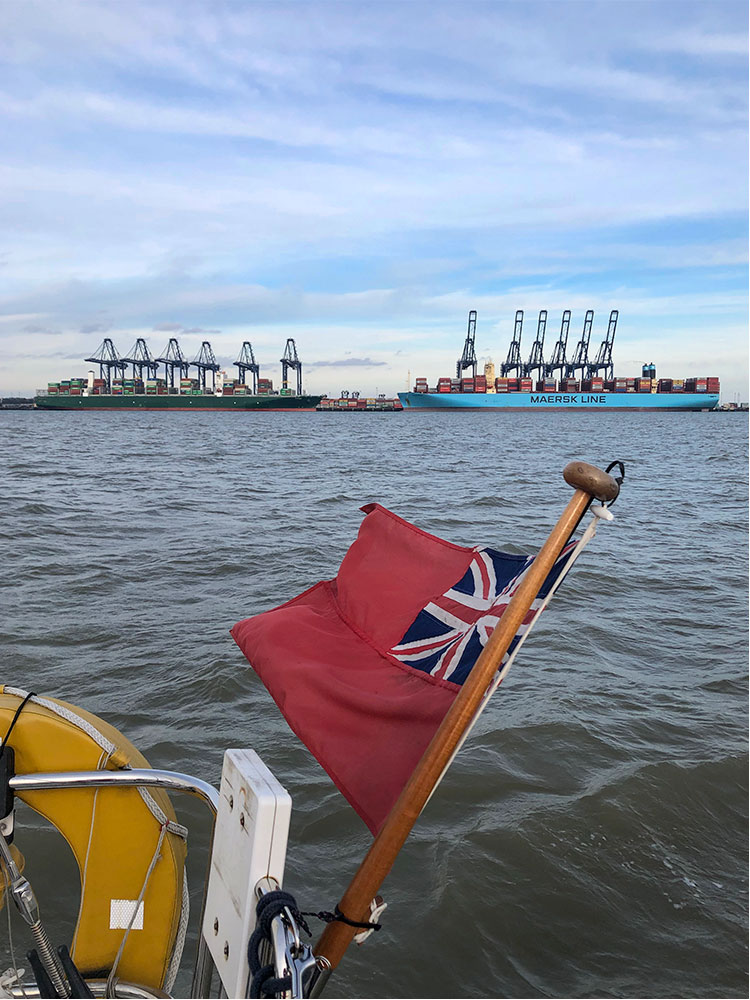 |
|||
| It was not just sailing, as well as trying to increase my sailing skills, I am also trying to increase my theory, planning, chartwork, and navigation. Some of this is in indoors, whilst others are on the water. Two images also added to show this part of my learning is shown below. | |||
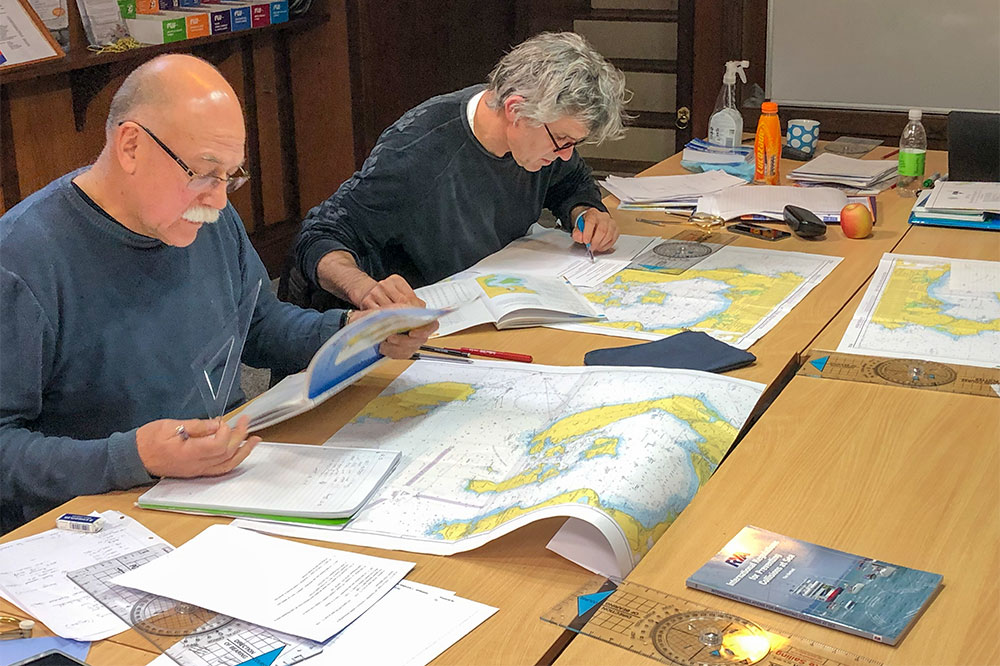 |
|||
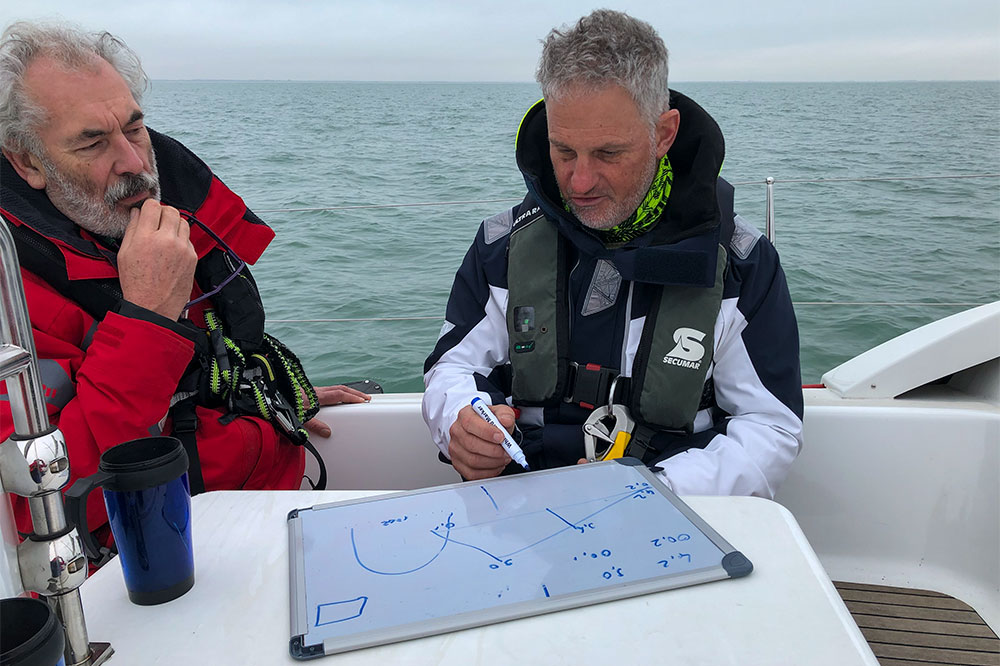 |
|||
|
Overall this was a good way to spend a few days, and I certainly learned a lot. But it is very different from the powered boats I have traveled on during recent years in both the Arctic and the Hebrides, and without any doubt, I have much more to learn before I could be classed as a yachtsman !!!. Everyone continues to learn and learning only leads to more knowledge which in turn leads to confidence and enjoyment. In my case when it comes to yachts, there is still a huge amount more to learn. But, I have booked some more sailing trips, so really hoping the next few months will lead to learning both more theory and practical sailing. This will come with more learning and practice along with more miles, experience, and nights in a yacht. During the next few months and I am looking forward to getting some photos during the journey and updating the blog. My plans include over 50 - 60 days on a yacht in 2019, with over 2000 nautical miles planned. Certainly looking forward to a new aspect of being on the seas. Indeed, I even have a new talk with a sailing theme which will be ready towards the end of the year. |
|||
|
|
|||
| Wednesday 13th February | |||
| The Image "That I Had In Mind" | |||
|
Sometimes, I hear a lot of photographers discussing "the shot they had in mind", and it is fair to say, that there are lots and lots of shots of many subjects that I would like to get. Indeed sometimes far too many to have certain shots in mind!! On many occasions, the opportunity to get the exact image that you had in mind before the visit does not materialise, and as a result, you have to try and get the best from the situation. On some of these occasions, this gives you an opportunity to either try something else or if the sightings as not as good as you had hoped, you just have to make do with whatever you can get. |
|||
|
I definitely had quite a few images in my thoughts that I wanted to achieve when I visited Bandhavgarh in India. Some of the days were very slow for wildlife encounters, but you would expect that when your subject is as elusive as a tiger. Overall, I am very pleased with many of the images, some of my results, are quite different to those that I had in mind before we went to India, and without any doubt, I want to have another attempt at photographing wild tigers. |
|||
-Walking-Towards-Camera--D6J6284-(1000px).jpg) |
|||
|
When reviewing my tiger images on my computers hard drive, I know that I can get better tiger images (but I totally understand that there is a huge element of luck involved, and a return visit would not guarantee that I would achieve better images) Before my visit, I had two images in mind, that I would like to achieve, the first image was of a tiger walking directly towards me, showing eye contact towards the camera, and the second image was a portrait of a tigers head that was reasonably big in the frame. Yep, I can do better, but, I am pleased with these two images and feel they are not that far away from the two images that I had in mind. |
|||
---Head-Shot---59O6447-(1000px)-Square.jpg) |
|||
|
|
|||
| Thursday 7th Feb | |||
| Showcase Images | |||
|
One of the things that I have been considering is where is a good place to showcase a few of my images? Should they be put into a "showcase page" on here - perhaps not as this may mean that visitors look at these images only and may not look at my other gallery pages. So having decided not to put them directly on here, that leaves quite a few other options. I already have a facebook page which I tend to use for new images, advertising talks, and other items, I don't feel the need to purchase a specific paid for facebook photography profile and then pay for advertising and other associated costs. |
|||
|
I have therefore decided to use Instagram as a platform for showing some of my images. As a result, I am in the process of adding some of my images are being uploaded onto this platform. I may be a bit late and some photographers already have uploaded hundreds of images and have thousands of Instagram followers. Hopefully, I have chosen a reasonable platform and Instagram will remain a popular social media site. Rather than upload lots of different images, I have started by adding one image per day, and currently have almost 50 uploaded. Time will tell, how this pans out and if I can keep this up. But my aim is to certainly try and end up with this a reasonable showcase of my photographic work. |
|||
 |
|||
| Please take a look at my Instagram pages, and if you like what you see, then please follow me at: | |||
| www.instagram.com/@nigelspencerphoto | |||
|
|
|||
| Monday 28th January | |||
| The Pressure For Results | |||
|
When you arrive at a new destination and are looking for a new species there is always pressure to deliver. This is especially true when you have flown thousands of miles and spent a few thousand pounds traveling to see a species that you have not seen before. Sometimes the views and the wildlife photographs are easier to achieve than others and provided you visit the correct location at the right time of year, the odds will be in your favor. For example: if you have traveled to the Falklands in December in search of penguins then you would expect to see them very soon, the same is true for puffins in Skommer or the Farnes in May, or for Bown Bears in Finland in June. But some species are definitely not as easy as these and require a large element of luck as well as careful planning. These more tricky species include Dolphins in the Hebrides, Polar Bears in the Arctic, and wild Dogs in Africa. Without any doubt, another tricky to see species is the Bengal Tiger, and there was no guarantee that we would see them in the wild during our visit to Bandhavgarh. To try and counteract this we decided to visit for two weeks and do 20+ game drives. This obviously increases our odds, as the more time spent in the right area usually means more potential tiger sightings, but that element of luck is still required. Once you arrive, the more days that pass before you see your target, the more the pressure mounts on both you and your guides. (I know this both from my time guiding in the Hebrides and as a paying customer hoping to see my own wildlife). This can mount very quickly on a short trip and the pressure for results is often felt. The opposite is usually true when your target species is seen early on during the visit, indeed it is always good to "get something in the bag". This means a lot of the pressure has gone, and whatever happens for the rest of the trip, there is at least the situation where you will return home with nothing has now gone. Tigers are definitely one of these hard to see species, many people go looking for tigers and do not see any, indeed we came across a few people on our trip that had not seen a tiger. We saw a tiger on our very first drive which was in the Tala zone of Bandhavgarh, at first we only got a brief glimpse when the tiger walked by, turned, and walked off into the jungle. There were many people in jeeps nearby and my guess was that nearly everyone got a very quick view and either no photographs or very poor photographs. But our guide had arranged elephant rides for us into the jungle to see the Tigers on their own away from the crowds. This gives a much better chance of seeing natural behavior and taking better pictures. There is the chance that the tiger will be asleep by the time you reach it and you may not get a good sighting, indeed the tiger has moved on, and you won't get any sighting at all. But generally it is worth paying the extra money for the elephant ride to increase your chances of a good sighting, the ride into the jungle is relaxing, makes a change from riding in the jeep and it is really good to see the jungle interior from a different perspective. The image below was taken from the back of an elephant on our very first elephant ride. This was also our first drive of the trip, it was very good to "get something in the bag" especially welcome on this our first drive. Definitely a very enjoyable sight indeed. |
|||
---59O4297%20(1000px).jpg) |
|||
|
|
|||
| Sunday 27th January | |||
| Photographing Bengal Tigers - A Long-Awaited Wish | |||
|
Over the years, I have been very fortunate to have seen a very wide range of wildlife subjects in many places from distant continents through to those that visit my garden. Many of these plants, birds, insects, and animals, I have also spent many a pleasurable hour photographing. But ever since I can remember, I have wanted to see tigers in the wild in India. It is a great country which I have previously visited three times including visits to Delhi, and the Golden Triangle, Goa, and Kerala. During each of these three trips, we saw some good wildlife, but none of them produced any tigers. Last year, I booked a trip to the Bandhavgarh National Park in India where we had 21 game drives in the park. We were obviously keen to see a wide range of Indian wildlife, but our main target by a very long way was the Bengal Tiger. Luck was on our side, and during this time, we saw tigers on 8 separate occasions which included these pictures below. |
|||
---59O5971-(1000px).jpg) |
|||
---59O5985-(1000px).jpg) |
|||
---59O6018-(1000px).jpg) |
|||
---59O6030-(1000px).jpg) |
|||
---59O6338%20(1000px).jpg) |
|||
---59O6566-(1000px).jpg) |
|||
---D6J6287%20(1000px).jpg) |
|||
|
|
|||
| Tuesday 8th Jan | |||
| Looking For An Alternative Viewpoint: | |||
| Trying To Create Something Different | |||
|
It is no secret that over the past few years I have been drawn towards sea-based adventures and plans are taking shape for a few more trips afloat over the coming months. Some of these will be in the same waters as previous years and the thought of returning to the Hebrides is always good. But I also have a few other plans for 2019, on a completely new boat and am looking forward to sharing stories and pictures later this. I feel it is important to "tell the story" and want to ensure I manage to end up with some images of the boat and of the trip as well as some of the wildlife and landscapes encountered. Is this the correct term, should I be saying seascapes? On my trip last year, to the Arctic last year, we were able to climb up to the crow's nest which at 17m above the deck gave a very different perspective to the boat and the surrounding waters. I also used a much wider lens than normal to also produce images of a different perspective. I borrowed a 10-24 mm lens and was really impressed by the results. Sometimes this created distortion, but at other times it produced something different and added a new perspective. Lastly, but certainly not least, was drone photography. I have been interested in the use of drones along with the images they produce for quite a while. On the Svalbard trip, there were three people with drones and it was good fun and excellent learning watching how they went about using them to get pictures. This is certainly something I wish to explore further. |
|||
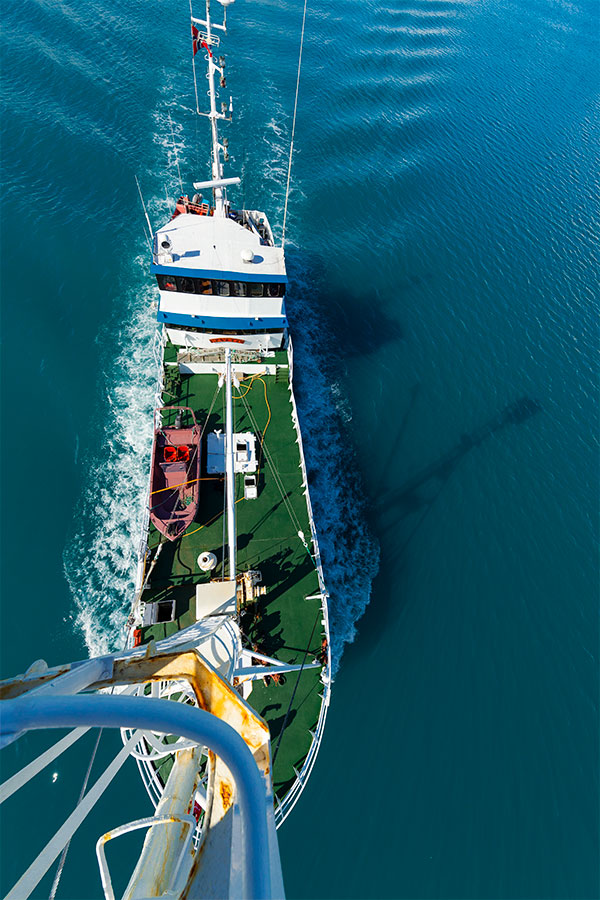 |
|||
| The above image is looking straight down from the crows nest at the Havsel below, while the image below is also from the crows nest but is taken at a different angle to show the boat in relation the arctic ice, sea, and glacier. | |||
---59O9851.jpg) |
|||
---59O9536.jpg) |
|||
|
Above is a fairly standard shot from the boat using the 10-24mm wide angle, by carefully positioning, I feel the frame has been filled the image nicely without ending up with too much clutter or empty space. The large white of one of the supports to the crows nest has ended up dividing the image in two, but as this is on the diagonal, I feel it has added to the feel of the image rather than distract from it. whilst below is a very similar image taken from just a few meters away from the above image, but this time the 10-24mm wide angle has ended up being used to create a totally different viewpoint because of my position under the crows nest and cranes rather than at the side of it. |
|||
---59O9526.jpg) |
|||
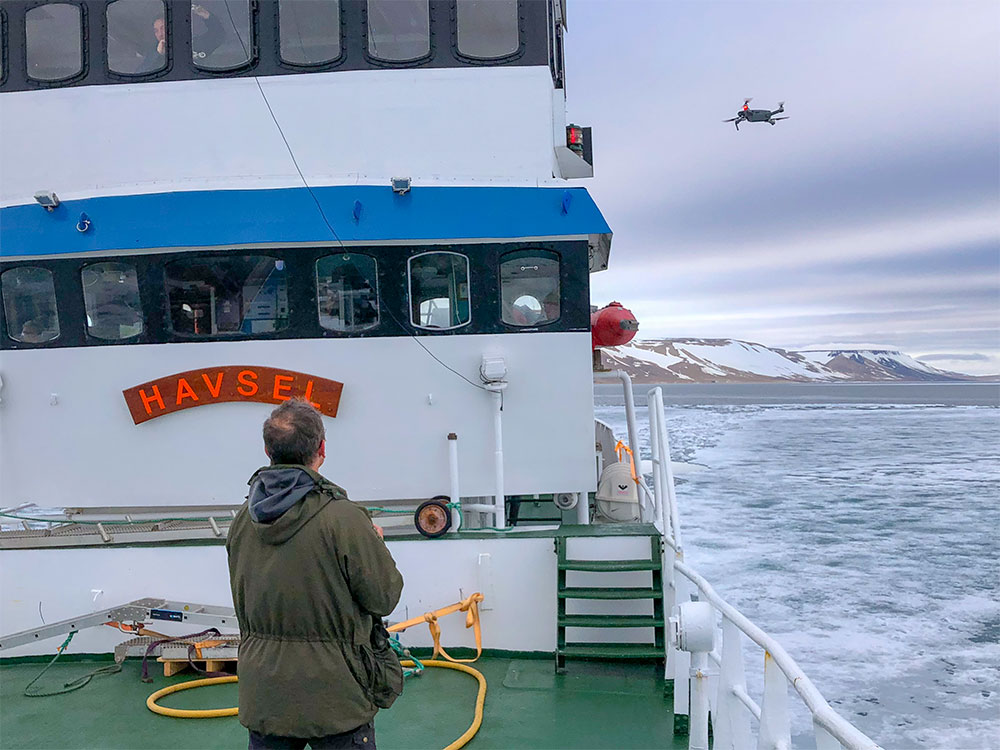 |
|||
| The above image shows Simon Roberts operating the drone from the deck of Havsel, whilst below is one of the images that Simon has kindly allowed me to use as a result of this flight. | |||
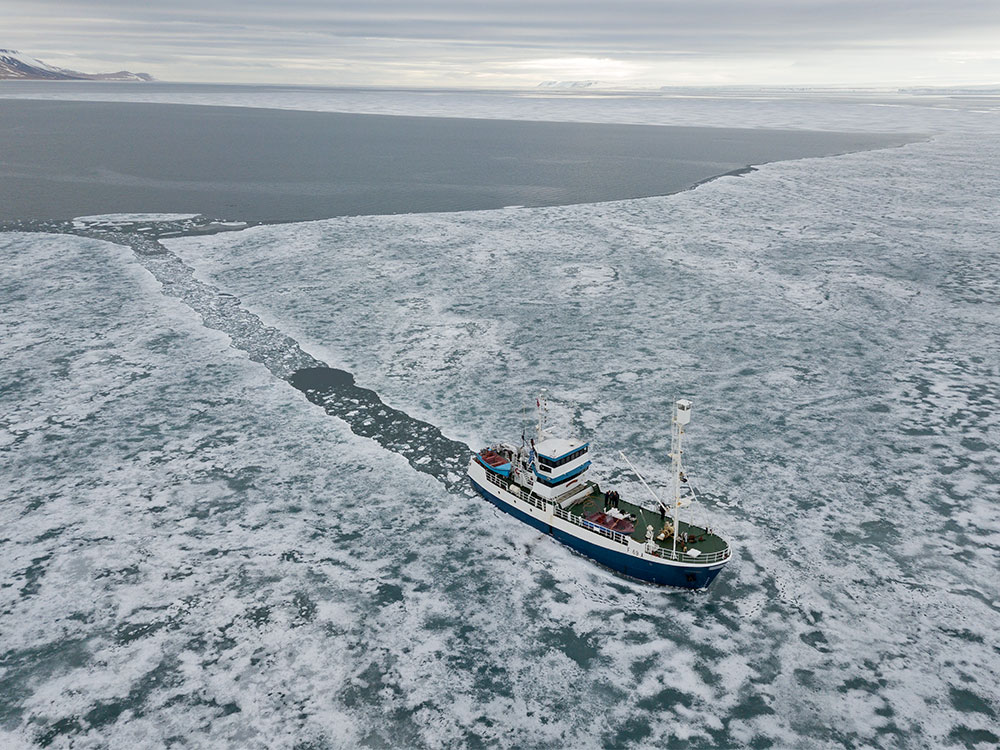 |
|||
|
|
|||
| Monday 7th Jan | |||
| A Few Birds And A Few Thoughts | |||
|
What is the future of images taken a few months (or years) ago? In my opinion, the best way to approach photography is to revisit species, locations, and habitats. Each time I am looking to improve on my previous photographic attempts. Sometimes you get an image that you are very pleased with and feel it is very hard to improve. But it is also good to look for something different. Some people collect species like a "tick list" and that is fine, everyone does what is right for them. But I like to spend a bit of time getting to know my subjects, watching them as well as photographing them and hopefully learning a bit more about them in the process. This results (hopefully) in a collection of images on my hard drive that I am pleased with. So what next? Sometimes the images have been taken for a specific purpose. This includes illustrations for my talks or because I feel there is a hole in my photographic files that I want to go and fill. When I return from my trip, I download the files onto one of my hard drives and then start sorting them. A few get deleted and a few get processed on the computer for various uses. Most that get developed will end up as Tiff files as well as 1920px JPG's for potential use in talks. They will also be converted to a smaller size for web and other online use. Over recent months and years, many of my images seem to also end up being posted onto Facebook where I try to post on a regular basis. But I also try and post in an organised manner (such as in an album of images being used to illustrate talks, or in an album on a specific location such as The Hebrides, or about a particular trip such as "Journey To The Arctic - Svalbard". I try to also add images onto my website here, and try hard to add a blog update at least once per calendar month. This is sometimes hard if I am away working on the boat or on a longer personal trip. But I feel its good to at least try to keep using my photos. I know people who take many months (sometimes years to process their images, and then end up doing nothing with them). There are many other social media platforms, some are obviously much more well known and consequently have a bigger following and usage than others. After Facebook, I guess the next two big platforms are Twitter and Instagram. I use both and have an active account with both. I mainly use Twitter to follow a few things, organisations, and people. But over recent times, I have found more people use Instagram as a platform to upload their images and as a result, I have also started looking at many of the images that others have posted and have started uploading more of my own images. A quick online search of Instagram showed that it is owned by facebook.... Perhaps that in itself should tell me something. I seem to be returning to the same brands in many aspects of my life. It is easy to stick with what you know, and I find myself being drawn back to Facebook, the BBC, and the websites and social media profiles of the photographers, media personalities, and organisations which I follow. Then it is back to the same devices, iPhone and apple. And then the same brands which in my case seems to be Paramo, Thinktank, Superdry, Nike, Rab, and various other outdoor and leisurewear brands. Over the past year, I am pleased to have found a few more different brands that I like such as Lomo, Oboz, and Acima. The purpose of this post was certainly not to shout out big name brands, but I certainly felt it was very interesting to see how these affect the everyday lives of so many millions of people. Even when I look at my photography which has elements of both my hobby, my business, and my employment, it is interesting to see how it is affected by these big names.
But getting back to the start of this blog post, here are a few images that I am pleased with, so I thought it might be nice to give them a very small reuse here on my blog. When browsing through my hard drive, I found many images that could be used here, so decided to start by limiting it only to birds, and to images that have not been used for greetings cards. It is interesting that out of the images posted below, I certainly have two favorites, but I am not going to say which they are. It would be good to revisit these two species and then take different pictures of them and thus create new favorite images. But in other ways, it would be even better to revisit the other species to take better images so perhaps these could intern become my personal favorites. That will hopefully lead to the resulting images being used on social media, shown here on my website, and finding their way into my talks. But I guess it will also lead to the same thoughts "what will I do with my images once they have been used" |
|||
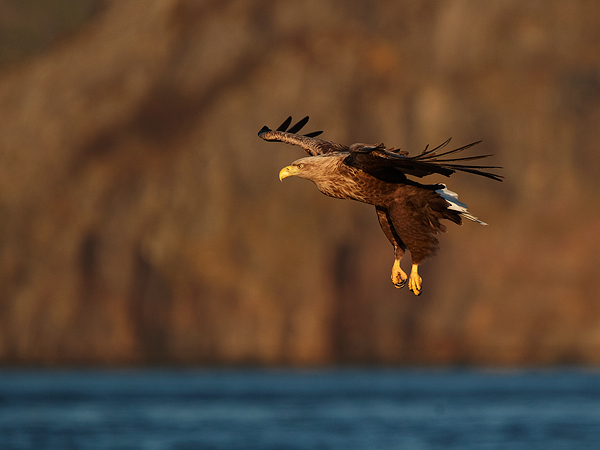 |
|||
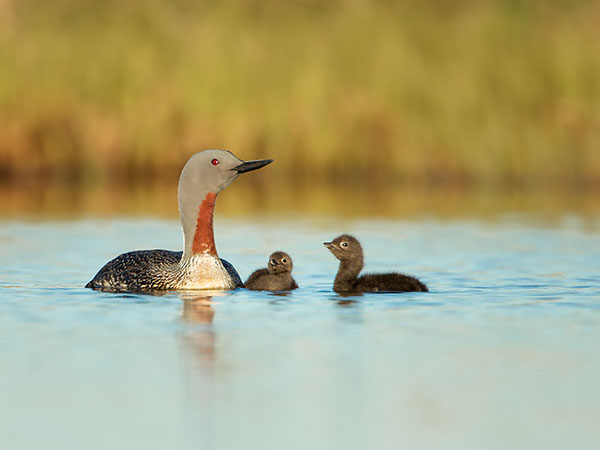 |
|||
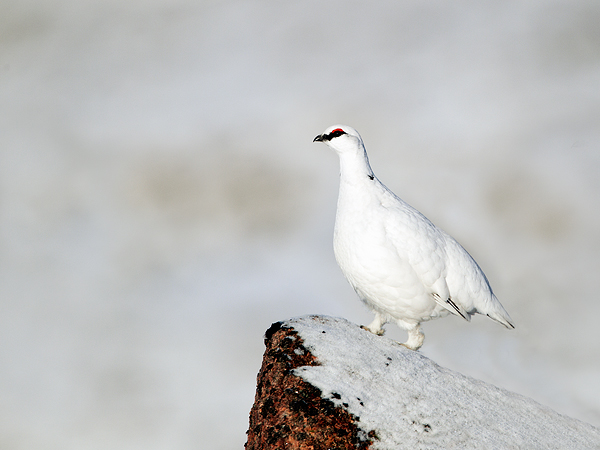 |
|||
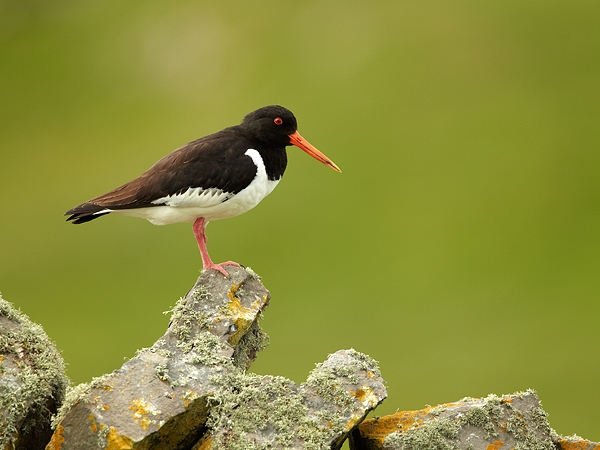 |
|||
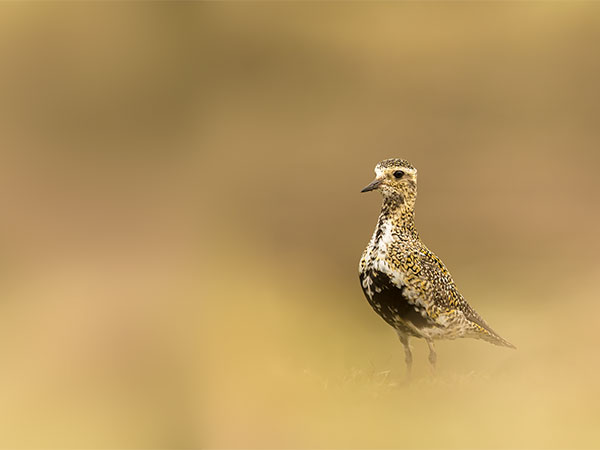 |
|||
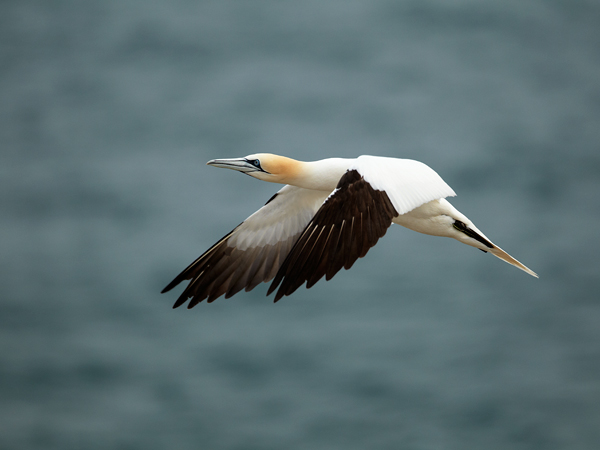 |
|||
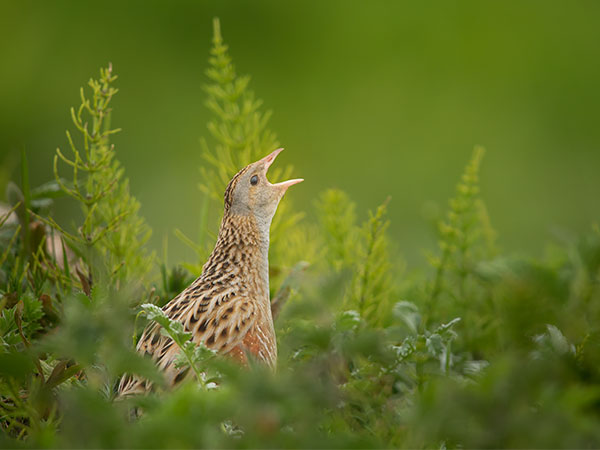 |
|||
|
|
|||
| Tuesday 1st January | |||
| Welcome To Another Year | |||
| Over recent years, I have ended up with quite a busy schedule which has consisted of talks to various groups and societies, work as a wildlife guide, along with a good mix of personal photography that has been spread as both local days out and longer trips. This is the situation that I want, indeed it has taken a few years to organize everything to get myself to this situation. | |||
| The amount of items in the diary at the beginning of the year has grown each year, and this year I have quite a busy schedule that I have gradually organised during the past few months. Obviously, this schedule will grow during the weeks and months ahead, but I am certainly going to have a busy 2019. | |||
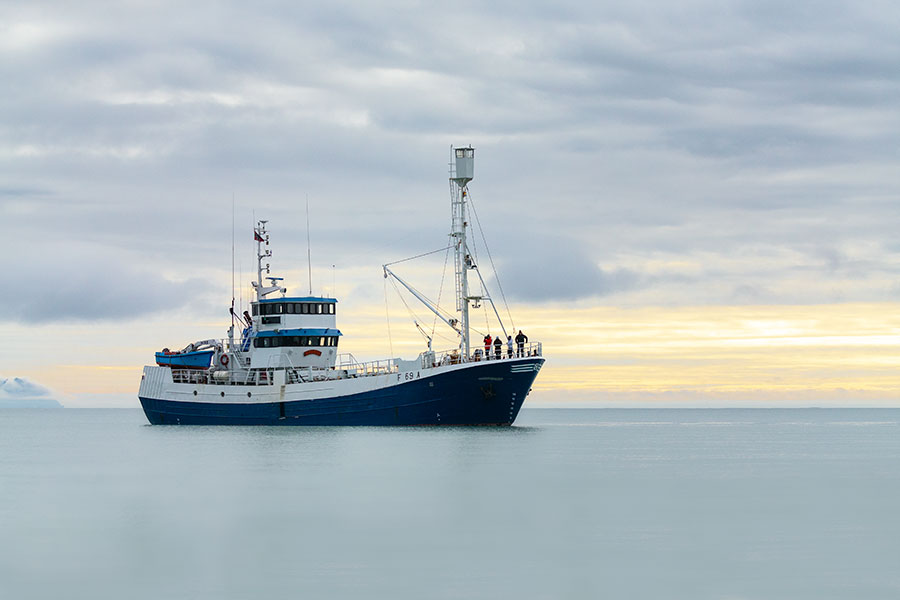 |
|||
| The Draw Of The Sea: | |||
|
2018 saw a large increase in the amount of time that I spent on the water. This was almost exclusively on two boats, one of these was "The Havsel" (pictured above) during my trip to the Arctic in June and July) This was one of the best wildlife photography experiences that I have ever had, and certainly something that I will never forget. The other boat that I spent quite a bit of time on was "Elizabeth G" (pictured below left) on which I traveled on for many weeks last year between mid-Aprill and mid-October whilst working as a Wildlife guide for Hebrides Cruises. I am really pleased that 2019 sees me back on the seas for many weeks during the next 9 months or so, but this time it will be on a wider variety of boats, and I am certainly looking forward to getting back on the water, and getting my camera out whilst looking at new and different scenery. Hopefully, more information, photos, and news will be added here during the next few months as time allows, but I am pleased to report that my first trip is only a few weeks away. It might be chilly, so I had better get my hat, gloves, and thermal ready. |
|||
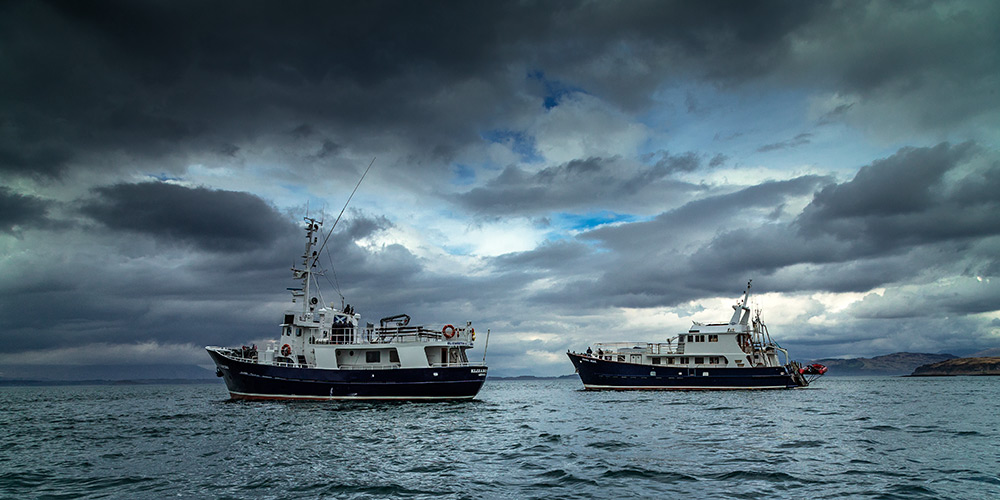 |
|||
| Out With My Camera Targeting Specific Species | |||
|
But, it is also great to get out on wildlife photography trips targeting various species. I am pleased to report that preparations are almost complete for a trip that I have wanted to do for a long time. If successful, this will be a new species for me and as is the case, the anticipation and excitement are growing as the trip gets nearer. Again, watch this space as hopefully a new species will be added to the pages of my blog and into my gallery in the near future. |
|||
| To view my older blog posts - please use the links above left in my "Blog" menu, where I have divided the blog by the calendar year going back to 2012. |
| Blog History |
|
I used to keep an active blog on my old Website and one of the things I am very keen to do is to get back in that habit and update this blog at least once a month and often more. Please revisit and keep an eye on what I have been up to along with my thoughts. |
